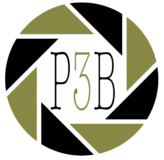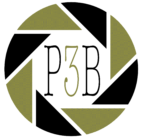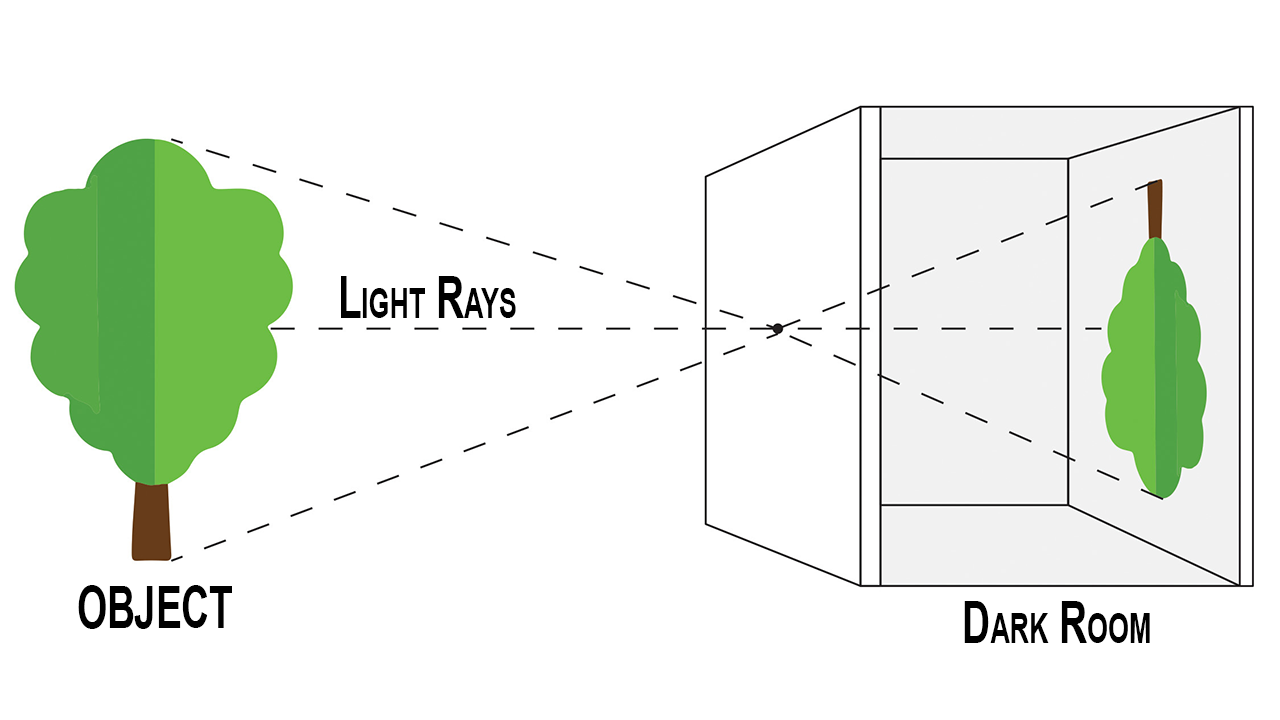
A camera obscura, or a pinhole camera, is a simple device that is often thought of as a precursor to the modern camera. Since light moves in a straight line through a hole, a projected image will appear to be flipped upside-down and inverted.

A camera without a lens is useless to a photographer. The lens is what focuses light from what you see through the viewfinder into a tiny, (typically) 35mm spot on the back of your film, DSLR, or mirrorless camera. If you remove the lens from your camera, the only kind of image you can produce is white light. Consequently, a high-quality lens can help you capture great photos even with a cheap camera, while a low-quality lens can make the best camera mediocre and the resulting image quality, poor.
It is unavoidable to start this chapter with the principle of imaging. How an image can be formed, possibly improved and recorded over the centuries.
In order to achieve this goal, optical tools were developed over time. In this part of the photographic website we give a picture of the development of optical tools throughout the centuries, such as the lens in all its compositions and applications, the prism and the diaphragm.
What is the definition of a lens?
A lens is a transmissive optical device that focuses or disperses a light beam by means of refraction. A simple lens consists of a single piece of transparent material, while a compound lens consists of several simple lenses (elements), usually arranged along a common axis.
Lenses are made from materials such as glass or plastic and are ground, polished, or molded to the required shape. A lens can focus light to form an image, unlike a prism, which refracts light without focusing.
Devices that similarly focus or disperse waves and radiation other than visible light are also called “lenses”, such as microwave lenses, electron lenses, acoustic lenses, or explosive lenses.
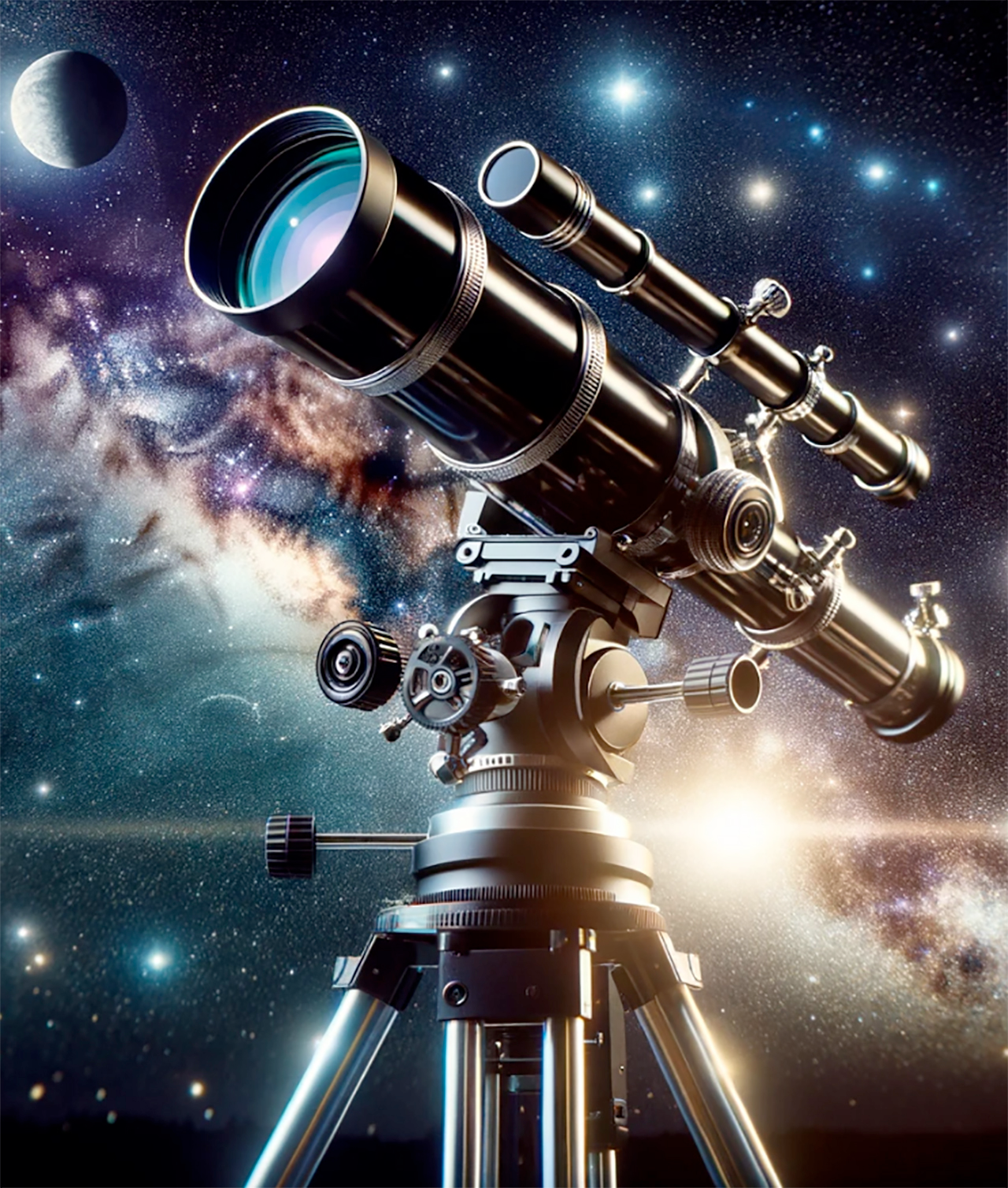
In 1608 a true telescope was created by Hans Lippershey, using two lenses; from this moment, telescopes evolved through the refinement of their lenses to the deep space telescopes used by astronomers now. Looking beyond our world has been transformed by looking through a lens.
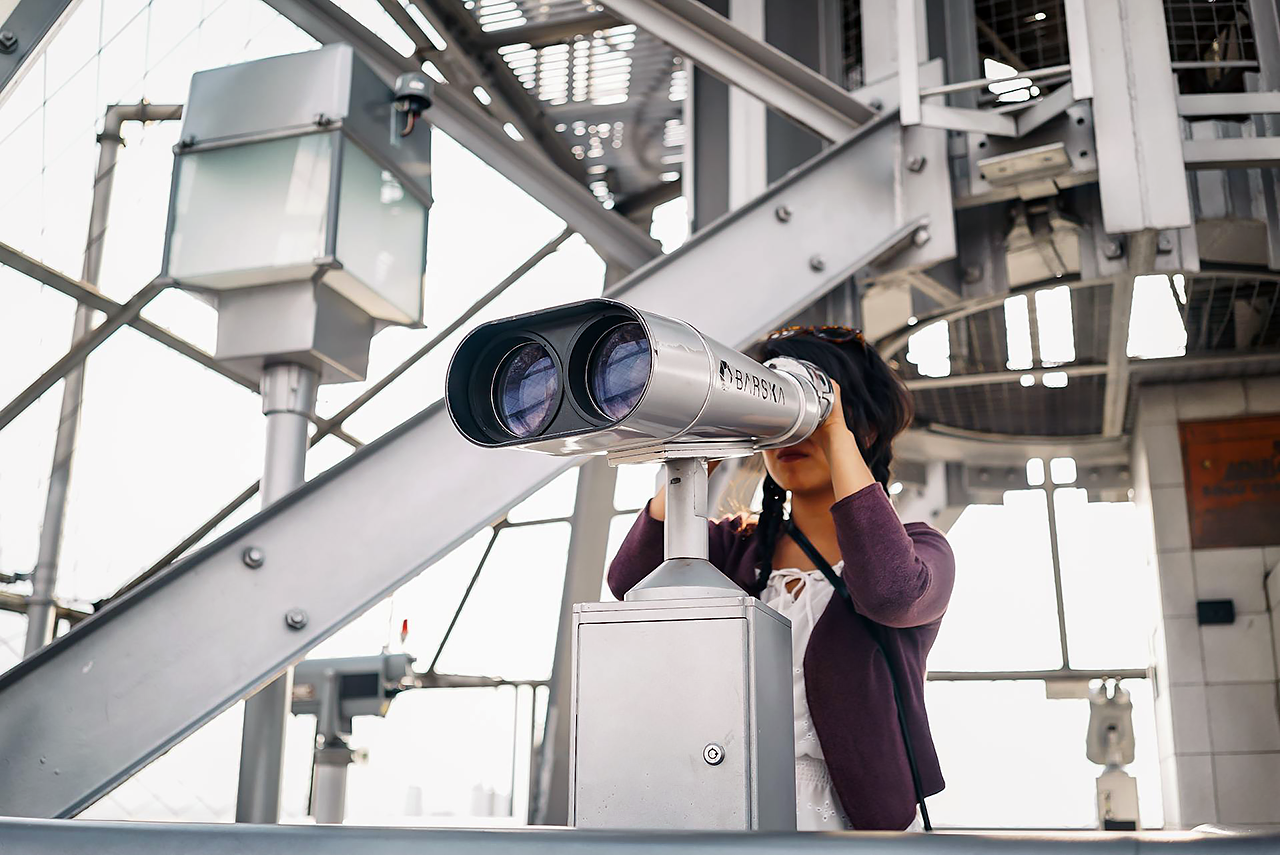
Another application of lenses: woman in purple vest uses large binoculars.
Ibn al-Haytham, pioneering scientist
Born around a thousand years ago in present day Iraq, Al-Hasan Ibn al-Haytham (known in the West by the Latinised form of his first name, initially “Alhacen” and later “Alhazen”) was a pioneering scientific thinker who made important contributions to the understanding of vision, optics and light. His methodology of investigation, in particular using experiment to verify theory, shows certain similarities to what later became known as the modern scientific method. Today, many consider him a pivotal figure in the history of optics and the “Father of modern Optics”.

Legend says, one day Ibn al-Haytham saw light shining through a tiny pinhole into his darkened room – projecting an image of the world outside onto the opposite wall. He realized that he was seeing images of objects outside that were lit by the Sun. From repeated experiments he concluded that light rays travel in straight lines, and that vision is accomplished when these rays pass into our eyes. Ibn al-Haytham confirmed his discovery by experimenting with his dark room (calling it Albait Almuzlim)- translated into Latin as camera obscura, which simply means “dark room”.

Illustration of a “portable” camera obscura.
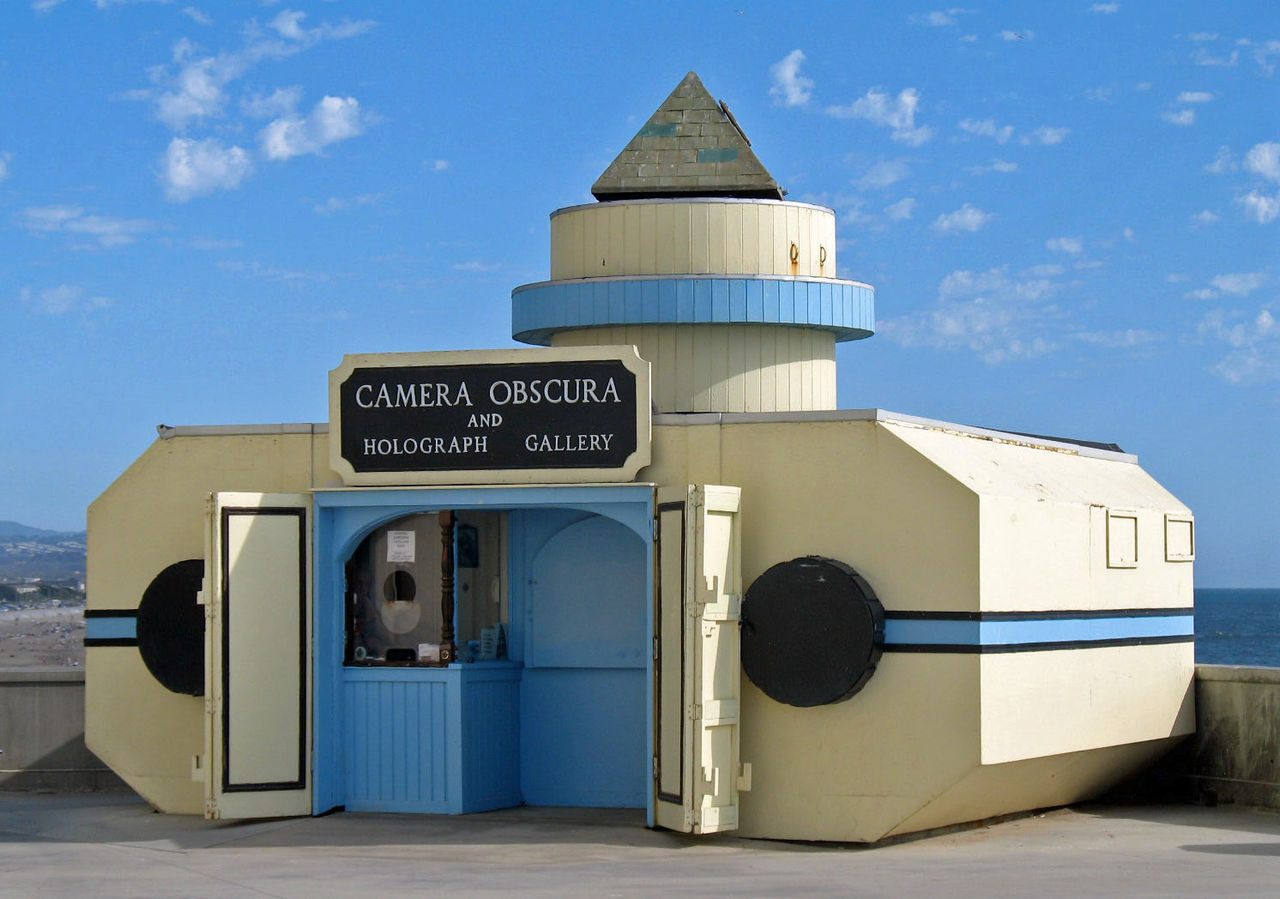
The Camera Obscura is a large-scale camera obscura, in western San Francisco, California. While the exterior of the building was extensively modified in 1957, the internal workings of the camera obscura have remained unchanged since its erection in 1946. The 1957 external architecture was eligible to be evaluated for historical significance upon reaching fifty years of age in 2007.
…it has taken hundreds of years to move from seeing through a lens to keeping the results, so . . . the history of looking through a lens has a surprisingly old beginning. The discovery of how to polish a clear stone, known as rock crystal, was made thousands of years ago.
The first crude lenses occurred in Ancient Egypt and Mesopotamia; around 700BC they started polishing crystals (often quartz) in attempt to replicate optical abilities that they noticed can be made with water.
 One of the most famous examples of those original lenses is Nimrud lens. Created in the ancient Assyria between 750 and 710 BC, this lens was used as decorative piece, magnifying glass or tool for starting fires.
One of the most famous examples of those original lenses is Nimrud lens. Created in the ancient Assyria between 750 and 710 BC, this lens was used as decorative piece, magnifying glass or tool for starting fires.
It is more certain that the ancient Romans knew about magnification. The renowned Roman Emperor Nero used emerald lenses to view gladiator games. Regardless of whether he could actually see better, his precious gem lenses became an instant, must-have fashion accessory among the upper classes. From togas to emerald lenses, perhaps Nero should also be remembered as one of Italy’s earliest fashion trendsetters.
The first evidence of any kind of mechanical visual reproduction, however, comes from Saudi Arabia, where unknown caravan riders noticed, at a time now lost, that a hole in their tent projected the inverted image of a passing camel onto the opposite wall. The famous scientist Ibn al-Haytham is known for the earliest use of this principle in a camera obscura. He was the first to demonstrate this with his lamp experiment where several different light sources are arranged across a large area. He was thus the first to successfully project an entire image from outdoors onto a screen indoors with the camera obscura.
Persian mathematician Ibn Sahl and Alhazen influential “Book of Optics” introduced modern theories of light to the Europe in the 1200s. This book claimed that light travels in straight lines and can bounce of all matter. This was one of the most important optic texts in the Europe well into 17th century.
Leonardo da Vinci wrote about the phenomena of light on surfaces, understanding that different intensities of light on a human face vary with the angle that the light strikes; these observations were formalised in the 1700s as a natural law, now used in computer rendering of digital images. Artists have continued to experiment with depicting the world as realistically as possible, right up to hyperreal paintings.
Today we associate cameras with photography, but the first cameras were boxes with lenses, designed to throw an image onto a flat surface in the form of a paper screen. These devices are called camera obscuras, and they are a stage on from pinhole cameras in using lenses. They have been used since the mid-1500s, by scientists, artists and architects to create small images from life, by tracing outlines of the captured image onto the paper screen.
There is a drawing, dated 1519, of a Camera Obscura by Leonardo da Vinci; about this same period its use was an aid to drawing. It was a dark box or room with a hole in one end. If the hole was small enough, an inverted image would be seen on the opposite wall.
Dutch Masters, such as Johannes Vermeer, who were hired as painters in the 17th century, were known for their magnificent attention to detail. It has been widely speculated that they made use of such a camera, although it is never proven.
Some early Camera Obscura were enormous. Athanasius Kircher described one which consisted of an outer shell with lenses in the centre of each wall, and an inner shell containing transparent paper for drawing; the artist needed to enter by a trapdoor. Then smaller, portable ones were made. Thus the camera obscura, as it came to be known, became a popular aid to sketching.
Robert Hooke of England, designed a portable camera obscura that was given to German astronomer Johannes Kepler. Kepler further suggested the use of a lens to improve the image projected by a Camera Obscura. The term “camera obscura” was first used by Kepler in 1604.
Explorations of the smallest details of life on earth became possible with the invention of the microscope, but as with looking down a telescope, the challenge was to interpret what was revealed. Drawing the observation was an act of interpretation, as well as a means of sharing new knowledge, a painstaking process of repeated looking undertaken by Robert Hooke and published as Micrographia (1665). For the first time, readers could see a flea presented as a complex insect, a ‘minibeast’ of the micro world.
All of these new ways of seeing, miniature worlds, making images of everyday worlds convincing, and finding new landscapes beyond the earth were contributing to knowledge before the birth of photography, but the crucial difference was the arrival of a chemical means of fixing the fleeting image that appeared through a lens. The arrival of photography did not solve the challenges of understanding what we could now see, but it extended the possibilities of what we could explore.
2015 was the 350th anniversary of the publication of Micrographia by Robert Hooke. A contemporary of Sir Isaac Newton, Hooke was Curator of Experiments at the Royal Society and Professor of Geometry at Gresham College. In January 1665, Samuel Pepys described Micrographia as “…the most ingenious book that ever I read in my life….”
Pepys’ enthusiasm was genuine. For many readers in the mid-seventeenth century, this was the first time they had seen large-scale illustrations of tiny creatures from everyday life. These were beings such as fleas, mites, and ants that appeared as specks to the naked eye, but were revealed by the microscope to be as intricate as larger animals.

Illustration of a flea in Micrographia by Robert Hooke. © Science Museum / SSPL
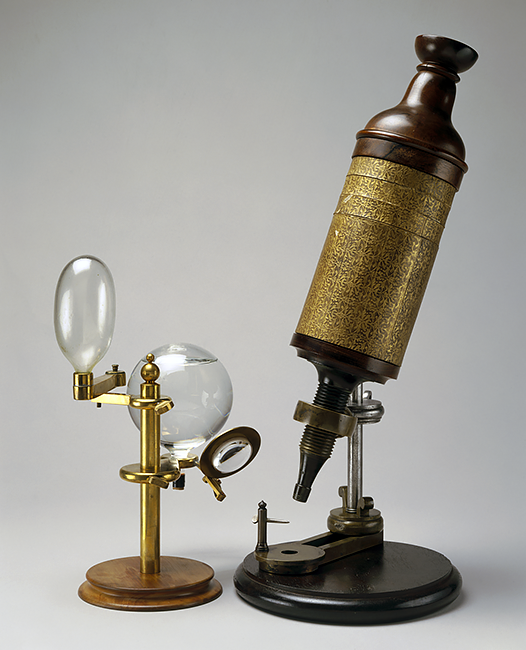
One way of celebrating this anniversary is by presenting a modern copy of the microscope illustrated by Hooke in Micrographia. The Science Museum’s Journeys of Invention showcases a microscope (1927-437) believed to have belonged to Hooke in 1675, but this was not the one as illustrated in Micrographia in 1665.
Microscope 1927-437 is part of the Science Museum’s permanent collection. It was purchased in 1927 from Thomas Henry Court, who had a great interest in early scientific instruments and presented a large collection to the Museum in the 1930s.
A memo written in May 1927 records a meeting with Court. In this document, the microscope is described as a “…full-size copy of Robert Hooke’s original compound microscope as described in his ‘Micrographia’, 1665.”
The Sutton Panoramic Wide-angle Lens with a 5 ½” diameter; a 100° angle of view. Two hemispheric components with water filled central cavity.
Ross purchased the British patent from Sutton in 1861, Liesegang bought the French and Belgian rights.
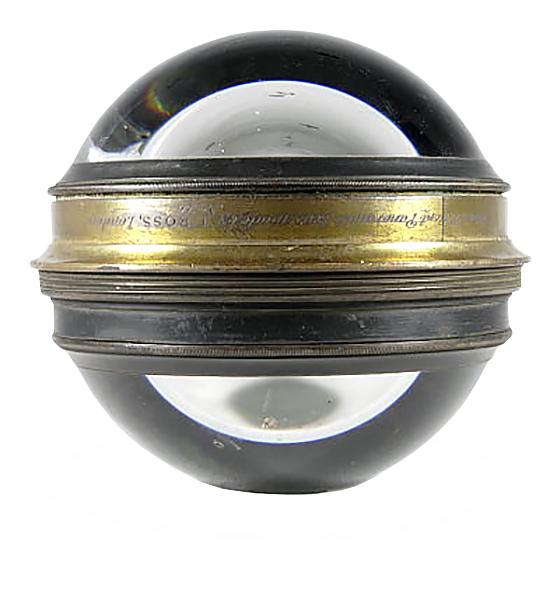
Patented in 1859 and first produced by Frederick Cox late in that year, the Sutton can claim to be the first wide-angle lens. After only a short period Cox’s involvement ceased and manufacture was taken up by Ross, an advertisement from December 1860 shows that Ross was starting manufacture.
It is a monocentric design comprising two, thick, flint glasses with concentric surfaces. The centre cavity is filled with water. Flint glass has a high refractive index and dispersive power, water low. The inner sphere is about one-half the diameter of the outer one. The lens had no coma and no astigmatism, there was spherical aberration either over or under corrected. The image surface was part of a sphere, for practicality a curved image on a cylindrical surface was adopted.
(Traditionally, flint glasses were lead glasses containing around 4–60% lead oxide; however, the manufacture and disposal of these glasses were sources of pollution. In many modern flint glasses, lead oxides are replaced with other metal oxides such as titanium dioxide and zirconium dioxide without significantly altering the optical properties of the glass.)
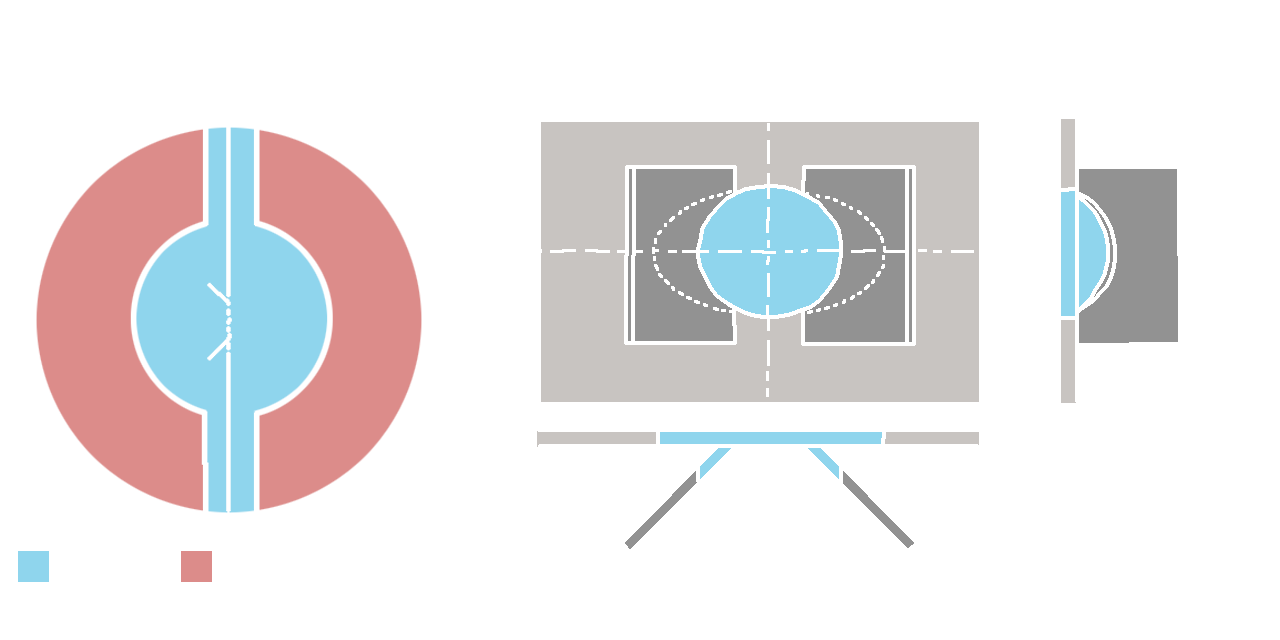
Conclusion:
Sutton was enthusiastic in all he did, with a high opinion of his abilities, and was inclined to make exaggerated claims for his inventions and ideas. When introduced he imagined that the Panoramic lens would become a common article of photography, he saw no reason why it should not be a photographer’s standard lens. Using a curved glass plate presented no obstacle, in fact he claims it was easier to coat a curved plate than a flat one.
The Panoramic lens was a failure in terms of sales. Apart from the technical issues of manufacture the basic problem was that there was no clear and obvious use for such a lens. Photographers would have welcomed a lens having a wider field of view but not at the cost of using a dedicated camera and curved plates. Such an extreme angle gave perspective distortion which would have limited its use to landscapes.
Large panoramas were produced in Victorian times, notably by pasting together three or four individual images, when done well with suitable subjects these appeared in photographic exhibitions and were sold commercially but the demand was not great.
Sutton devised, at least on paper, viewers for stereoscopic panoramic prints, perhaps he would have been better to promote a new format of panoramic cards rather like stereo cards.
The early photographic experiments of Thomas Wedgwood, Nicéphore Niépce. Henry Fox Talbot and Louis Daguerre all used simple single-element convex lenses, These lenses were found lacking. Simple lenses could not focus an image over a large film plane (field curvature) and suffered from optical aberrations.
The very first camera lens, as we would know it today, was invented by the maker of the first camera, Charles Chevalier. This was shortly after Louis Daguerre invented photography in 1839. Chevalier’s lens was an achromatic landscape lens — basically, a lens with two elements that reduce chromatic aberration. This lens had two apertures only, f/14 and f/15 and in order for it to work, exposure times needed to be incredibly long, on the order of hours or days.
From 1839 on, the photographic lens underwent a transformation. In 1840, Chevalier developed the world’s first variable focus lens, specifically for portraiture. This lens sported an aperture of f/6, requiring shorter exposure times. This design was shared among the newly born photographic community and Max Petzval, an Austrian mathematician/physicist, developed an even better portrait lens, also in 1840. This lens was made by Voigtlander. Until the invention of the Petzval lens, people sat in the blistering sun, waiting for a long time during the exposure. The exposure time was (often) 30 minutes, enough to make the sitter cry, although that wouldn’t be caught on camera.
Petzval with the help of the Austrian army doing all the calculations designed a lens. The calculations involved a very scientific approach, with refractive data from multiple wavelengths. The previous generation of lens designers had a trial-by-error approach, making lenses and then measuring them. There is a lot of mystery as to how Petzval was able to design such a lens, but the fact is, Petzval was able to design a lens that had an f-number of F3.5 in an era where F8 was the norm.
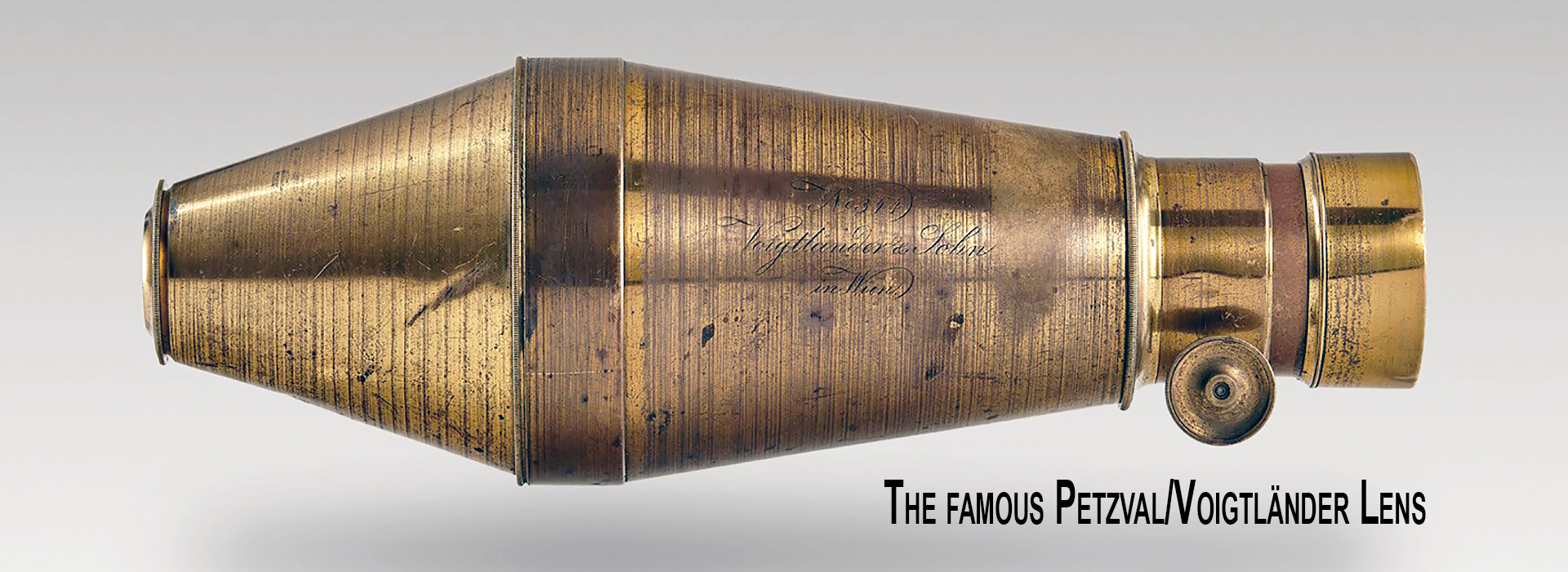
The aftermath story of this lens is just as intriguing as its birth. Voigtlander and Petzval had a nasty legal battle over the rights of this lens, and Petzval actually won. But the patents were only valid in Austria. and when Voigtlander moved their head office to Germany, Pztzval’s patents were not valid there. Thus, the majority of Petzval lenses produced did;t bring in a cent for Petzval himself. He was largely forgotten later in life and didn’t end up extremely wealthy.
After these came lenses like the panoramic lens, which was developed by Thomas Sutton, the globe lens, by Charles Harrison and the Orthoskop, developed by Petzval. For the next 100 years, lenses such as these would be developed and improved upon or scrapped depending on the faults or strengths of each.
Selectable apertures were first invented in 1858 by John Waterhouse. Unlike today’s aperture stops, the Waterhouse stops had no adjustable ring. Instead, to change the aperture, photographers used brass plates with holes of different sizes, changing plates between shots to adjust the aperture. It took about 30 years for this innovation to become the new standard — it was the 1880s when photographers began to realize that aperture affected the image’s depth of field and therefore, depth of field could be used to create various effects.
Between the 1830s and the 1930s, lenses steadily grew more complex, adding more elements and more ways to adjust them. The telephoto lens was invented in 1905 in Germany, known as the Busch Bis-Telar with an aperture of f/8. However, these were all small steps compared to the rapid development of lenses in the 1930s. During the 1930s, cameras were becoming more and more common. No longer was the camera a tool used for portraiture or science but also for art. Amateurs had cameras, there were aerial cameras, movie cameras had been invented and even a few hobbyists had their own cameras to make home movies or still pictures.
With this proliferation of cameras came the proliferation of lenses. The first reversed telephoto lens was produced to create close-up images. Photographers with 35mm movie cameras could now buy zoom lenses for their cameras.
Interestingly, by 1934, the first non-glass lenses were appearing. It started with the Perspex lens, which was a plastic lens created in 1934 by KGK Syndicate. Then, Plexiglas hit the market later in that same year, the first ever lens made from acrylic. Major companies, many of which are still in operation today, like DuPont and DOW Chemical, started their own lines of cameras and lenses. By the end of the decade, it was assumed that glass lenses would become a relic of history while plastic, acrylic and Lucite lenses would be the way of the future.
The development that brought us lenses as we know them today was World War II, or more specifically, the aftermath of World War II. You see, during the war, the Japanese economy was devastated. Afterward, during the U.S. occupation of Japan, billions of dollars were poured into the nation’s economy. With close to half of the country’s factories destroyed — and a large population of soldiers entering a workforce that did not have the jobs to support them — the Japanese turned themselves into a technological powerhouse.
Japanese cameras and lenses became the standard that all manufacturers around the world used to forge ahead. Even today, Japan is a major force in the market for cameras and lenses. These long decades of competition are what led to the technology that we have today.
The first and simplest objective lens was the “biconvex converging lens”. It was used in Daguerre’s camera. The later meniscus (spectacle lens) was also a single-lens “lens”. However, individual lenses have a number of aberrations, which increase with larger lens diameters.

By combining different lenses, imaging errors can be minimized or shifted in desired directions. The optician speaks of correction here.
In 1865, Carl August von Steinheil introduced the periscope, two opposing converging lenses with a large field of view (wide angle) at low light intensity. It was the first symmetrical lens, with an aperture between the lenses. However, it only eliminated a few aberrations in the individual lenses.

Only the achromatic converging lens (achromat) made a certain error correction possible with two glasses cemented together. In the early days of photography, such lenses with apertures of 1:12.5 or 1:11 were called landscape lenses. In later years they were found in popular cameras as box achromats with apertures of around 1:9.
The aplanate, developed from the periscope by Steinheil around 1866, was also symmetrical and had 4 lenses, two of which were cemented together. The collective term astigmat is also used for the early recording lenses.
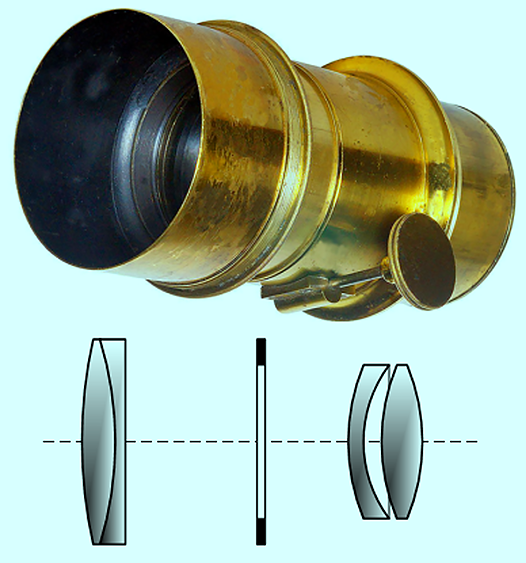
The Petzval lens
The portrait lens created in 1840 by the Viennese physicist Josef M. Petzval was the measure of all things for almost half a century. Due to its high light intensity, it was the only lens design at the time that made it possible to photograph people with tolerable exposure times. The two-part Petzval lens with the aperture in the middle consists of two cemented lenses in the first section.
What is remarkable is the large air gap between the two elements, which causes the astigmatism to be almost completely eliminated, with the disadvantage of a fairly large curvature of the field of view. This means that only a very small angle of view can be used. This excellent lens still has its fans today. Unfortunately, Petzval did not write down his calculations anywhere and took his knowledge to his grave.
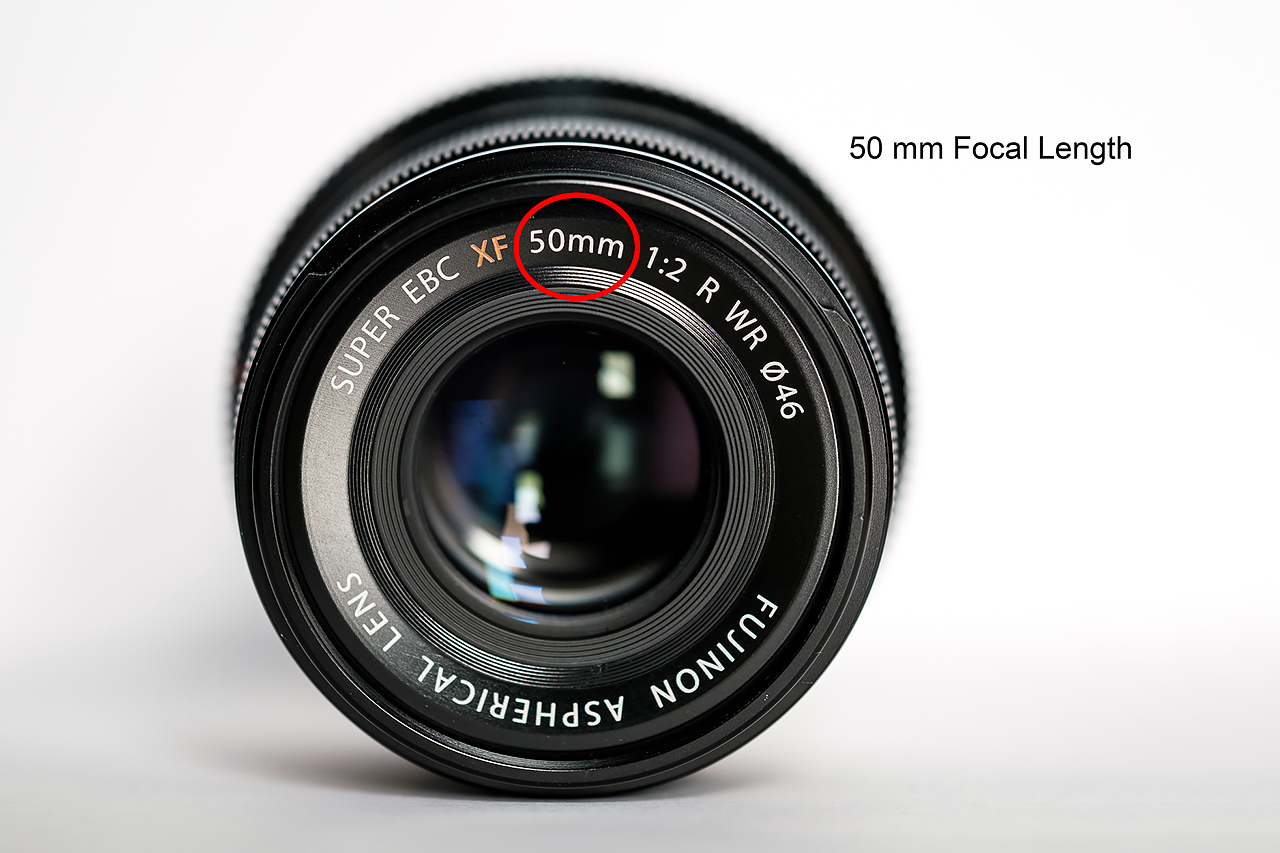
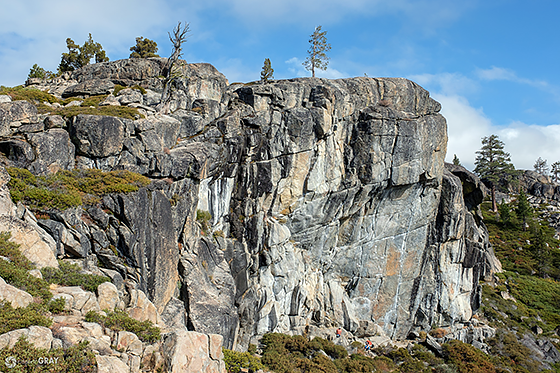
Focal length: 25mm. Can you spot the climbers yet?
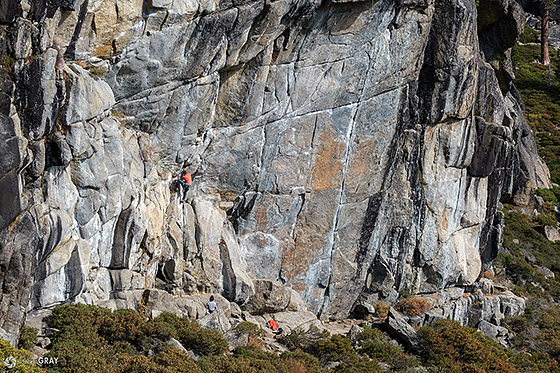
Focal length: 50mm. Now the climbers are easy to see, but they still look small.
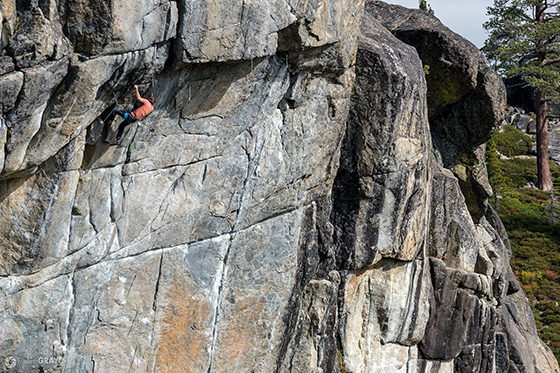
Focal length: 87mm. The climber in this photo above is starting to look pretty clear.
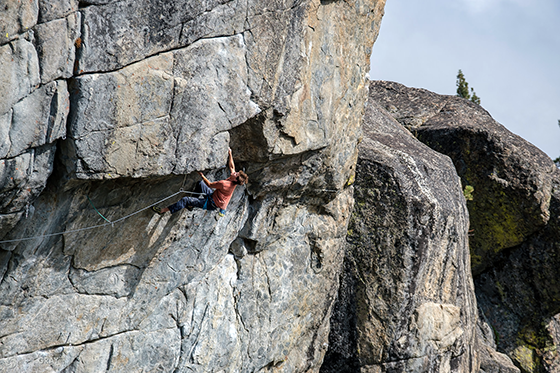
Focal length: 140mm. And now you can even see the expression on the climber’s face!
Conclusion:
Photographic subjects appear larger when you use long focal length lenses, which is why such lenses are so popular for wildlife photography and sports photography. With a long enough lens, you can easily make a subject look larger-than-life.
All lenses filter and focus light so that it hits the film surface correctly. However, there are a variety of other factors that determine how a camera lens affects the look and quality of the final photo.
Focal length is the measurement of distance (in millimeters) between the point of convergence of your lens and the film surface. The focal length range of a lens is expressed by a number, and that number tells you how much of the scene your camera will be able to capture. Smaller numbers have a wider angle of view and show more; larger numbers have a narrower angle of view and show less.
Aperture is how big the opening is that lets light in, expressed in f-stops. F-stops are counterintuitive, because the larger the number, the smaller the opening. For example, f/2.8 allows twice as much light into the camera as f4, and 16 times as much light as f11. Aperture affects the depth of field: larger openings create a shallower depth of field, while smaller openings make more of the image in focus.
Maximum Aperture. Lenses will list a maximum aperture on the barrel, indicating the maximum width a lens aperture can open. Typically, lenses with a wider maximum aperture cost a bit more. A lens with a wide maximum aperture is great for low light situations.
Depth of Field. Controlling the amount of the photo that is in focus is one of the photographer’s best tools to help draw the viewer’s eye where you want it. For example, landscapes are typically shot so that everything is in focus, so photographers will shoot at small apertures (e.g. f11 or f16). The depth of field varies with the type of lens, due to maximum aperture.
Many photographers misunderstand the concept of focal length. Contrary to what some people think, the focal length of a camera lens is not the lens’s physical length, and it has little to do with its overall size. So, what is focal length?
The focal length of a lens is an optical property of the lens. The exact definition is: Focal length measures the distance, in millimeters, between the “nodal point” of the lens and the camera’s sensor. “Nodal point” may sound complicated, but it is simply the point where light converges in a lens.

Here’s a simple diagram showing the focal length of a lens, based here upon. Focal length is a property of the lens itself, not the camera. For example, a 50mm lens is a 50mm lens, regardless of the format of the camera.
Focal length is important because it relates to the field of view of a lens – that is, how much of the scene is captured. It also explains how large or small a subject in the photo will appear.
While the technical definition of focal length may be relevant to some people, as photographers, it is more important to understand is what focal length looks like! So, take a look at the four pictures on the left. These were taken at increasing focal lengths, starting with 25mm and ending at 140mm.
For another way to visualize this phenomenon, consider the illustration below. It shows the approximate field of view of three different lenses: a 500mm lens at one extreme, a 20mm lens at the other extreme, and then a 50mm lens, which is considered a “normal” lens.
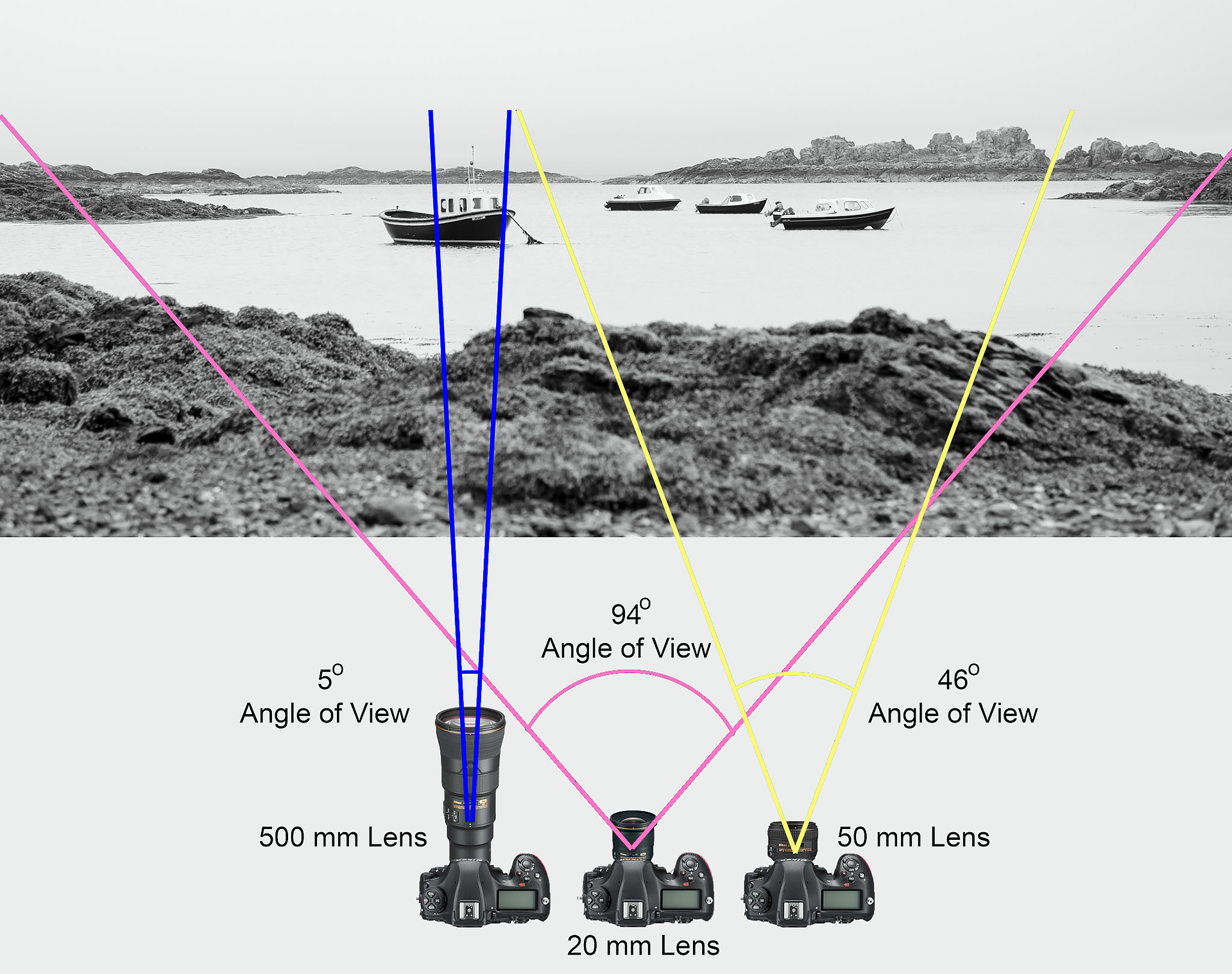
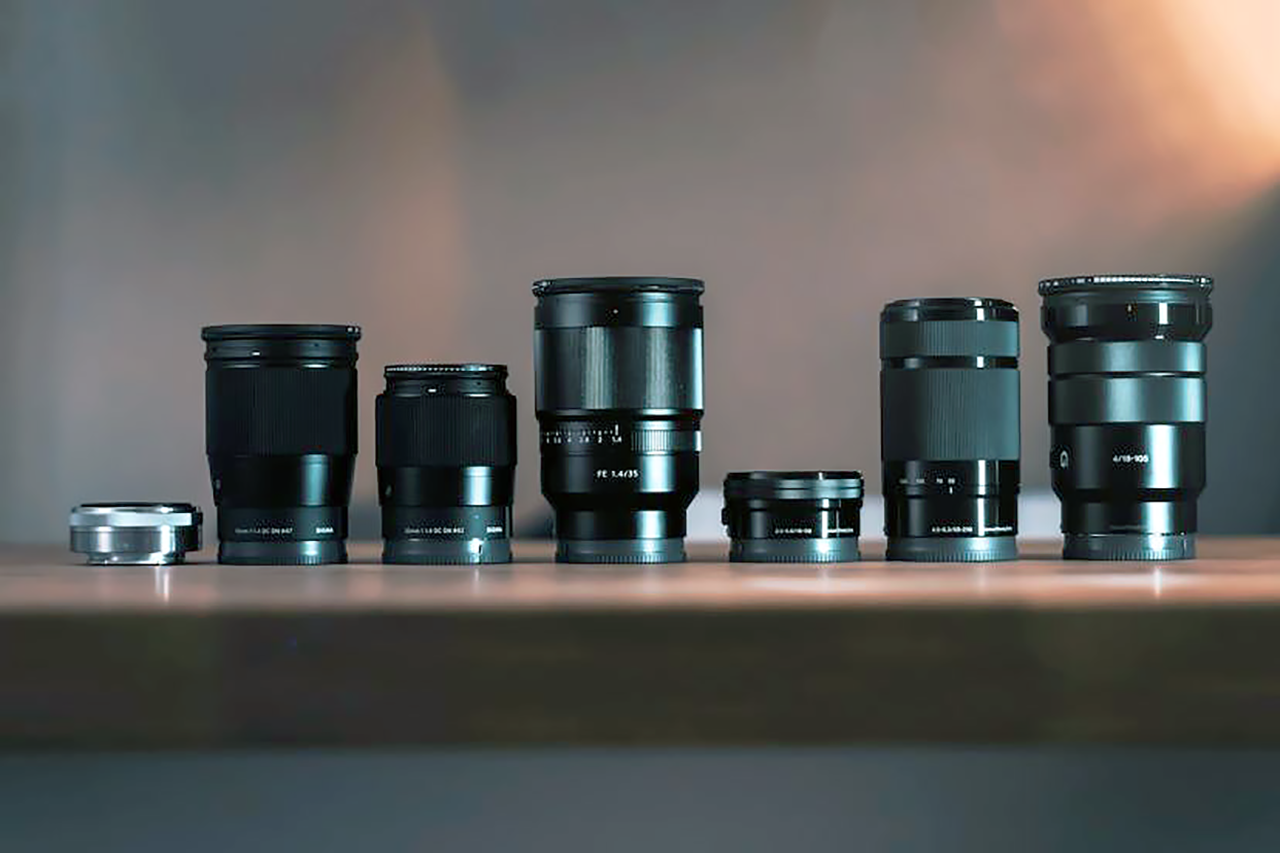
There are two basic categories of camera lenses:
- 1. Prime lenses.
Primes have a fixed lens focal length, making them faster and sharper. While prime lenses are less flexible due to the fixed focal length, they are also fast and lightweight, making them easy to travel with - 2. Zoom lenses.
Zooms use a series of lenses to allow different focal lengths from a single lens, making them more flexible but not as fast. They contain more glass, which aids in their flexibility, but they also tend to be bigger and heavier than prime lenses.
Within both prime and zoom types of lenses, there are a variety of lenses, all with different focal lengths.
- 1. Macro Lenses
This type of camera lens is used to create very close-up, macro photographs. They have a unique design that allows them to produce sharp images at extremely close range. These lenses are great for nature photography, enabling you to capture an enormous amount of detail in one image. - 2. Telephoto Lenses
Telephoto lenses are a type of zoom lens with multiple focal points. These types of lenses are great for isolating a subject that is far away. However, such great magnification comes at the price of a narrower field of view. In the same way that you would use a telescope to look at stars and planets, a telephoto lens is used for focusing in on distant objects. Many sports photographers use telephoto lenses to provide a sense of intimacy with the subjects on the field (the players) while standing on the sidelines or in the bleachers. There are many different types of telephoto lenses, and some can be quite large, heavy, and expensive, so take some time in choosing the right telephoto lens. - 3. Wide Angle Lenses
Wide angle lenses are ideal for fitting a large area into your frame. This is especially useful for landscape photography or street photography. With wide angle lenses, almost everything is in focus, unless your subject is very close to the lens. - 4. Standard Lenses
Standard lenses can be used for a variety of different types of photography. Their focal lengths fall somewhere in the middle, usually between 35mm and 85mm. A zoom lens within this range will have a small enough focal length at the bottom end to take a wider angle, full-frame photo, and a large enough focal length at the top end to zoom in on subjects. - 5. Specialty Lenses
Finally, there are some more specialized camera lenses that can impart a unique look and feel to your photographs.
There are several types of specialty camera lenses, but a few of the most prominent examples are:
- Fisheye lens. A fisheye lens is an ultra-wide-angle lens that can take in a full 180 degree radius around it. Fisheye lenses are so named because they distort an image’s field of view, making even a room in a house look like a bubble.
- Tilt shift lens. A tilt shift lens distorts perspective, making things look smaller than they really are—almost as if they are toys.
- Infrared lens. These lenses play with light rather than perspective, filtering out all light waves except infrared for a unique visual effect.
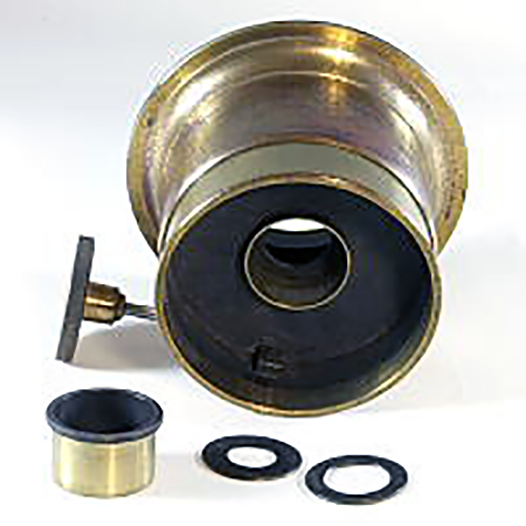
Washer stops or Pillbox stops. These consist of individual discs with holes punched in them. Found on early lenses especially on landscape types where they fit at the front of the lens behind a retaining ring.
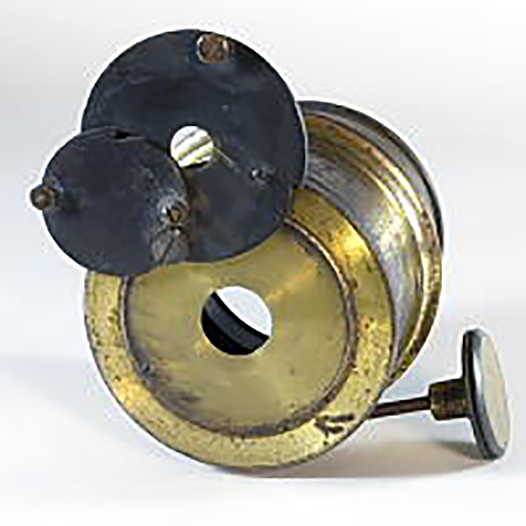
Pivoted stops were fitted to early landscape lenses from the 1840s and 1850s, one or more metal plates containing an aperture mounted on the front of the lens barrel can be swivelled in front of the lens.
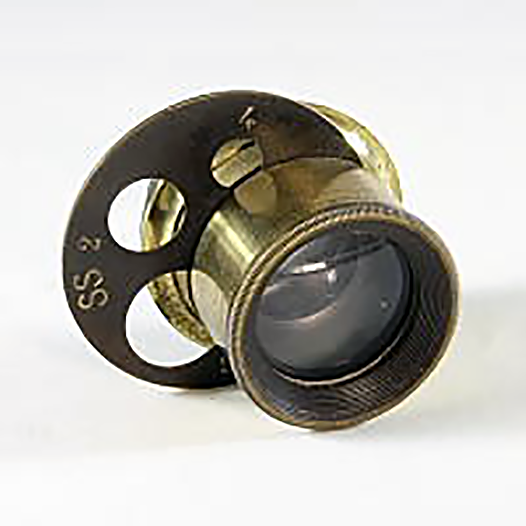
Wheel Stops or Rotating Stops consist of a circular disc mounted off-centre to the lens axis containing a series of apertures. The disc is usually mounted within the lens and can rotate to bring one of the apertures into use. It was used from the early 1840s but became popular in the 1880s and 1890s especially on wide-angle lenses.
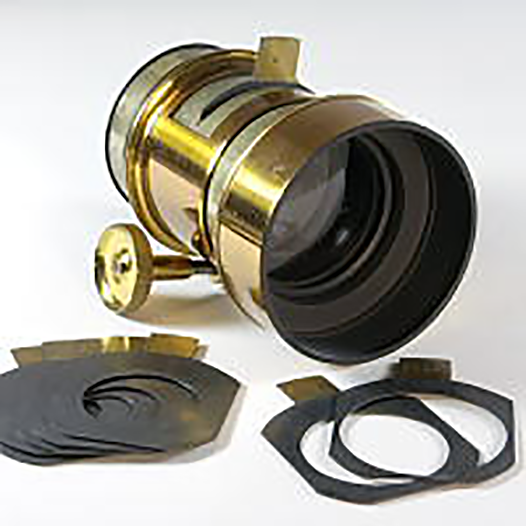
Waterhouse Stops are roughly oblong plates with a hole punched in the centre of the plate and with a small tab added to grip the stop. They generally fit at the centre of the lens between the optics but on landscape lenses they are at the front of the lens mount. Lenses fitted with Waterhouse stops are advertised as early as September 1858.
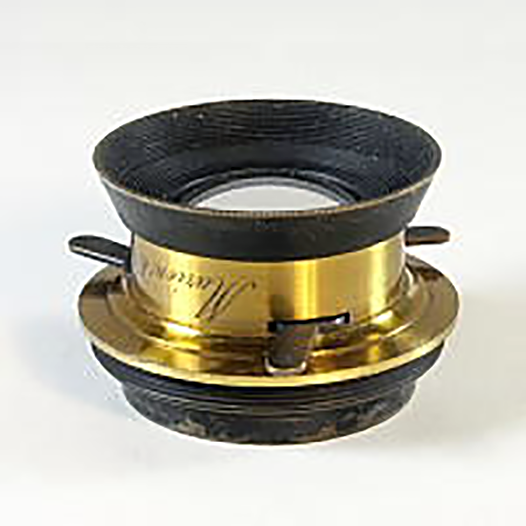
Three stops are mounted in individual strips of metal which are able to pivot in front of the lens axis. The end of the strip passes outside the lens mount to form a lever. Found on lenses by Darlot and called “Lever Stops”.
A detailed part of this already extensive lens knowledge should be dedicated to the aperture. As already mentioned with the light intensity, a lens is calculated for the greatest possible amount of light throughput. Most of the time you won’t need that much light – it’s bright and you’re using a highly sensitive film.
What to do – one possibility would be a gray filter, which can also be advisable in special cases. In any case, care must be taken to ensure that only as much light reaches the film as it can handle. On the one hand, you regulate this with the shutter speed of the camera, but that is a different topic.
All photo lenses have a device built into them that can be used to regulate the light throughput – the aperture. In the usual design it is called an iris diaphragm because it uses the eye function to control the incidence of light with more or less opening. In the past, plug-in panels, small perforated panels, were pushed into a designated slot in the lens barrel. Simple and also special cameras also use other designs, such as fan-like structures or flaps with hole diameters of different sizes.

The iris diaphragm is regulated by means of several slats, which are arranged in such a way that a more or less large passage opening results when rotated axially. It was invented in 1887 and has remained virtually unchanged since then.
Depending on the purpose and type of camera, the arrangement is constructed in a more or less complex manner and, ideally, is installed not in front of or behind, but between the objective lenses – with symmetrical lenses this is even mandatory!
This must also be taken into account in the optical calculation and can lead to additional design problems with shorter focal lengths and small designs.
In the form of operating a housing ring using the thumb and forefinger, which has been common since the early days of cameras, this is called the normal aperture, which can be continuously adjusted between the smallest opening (large number) and full opening (smallest number). The resulting reduction in luminous flux is given in numerical values.
Incidentally, these numerical values did not always correspond to the ratios known today, which – like the largest relative aperture described above – all relate to the respective focal length. Throughout the history of photography there have been different series of numbers for this.
The ratio of the focal length to the diameter of the aperture. Way back the numbering of the scale varies, the most common were:
- f2, 2.8, 4, 5.6, 8, 11. This was the standard used in Britain.
- f2.2, 3.3, 4.5, 6.3, 9, 12.5. This was widely used on continental lenses.
- Other values used were: f10, f20, f30. Found on Lancaster lenses.
The values on the scale generally indicate an aperture half the size of the preceding one, and therefore a relative exposure requirement of x2, i.e. going from a larger stop to the next value requires twice the exposure. The numbers themselves, since they are calculated from a dimension and not an area, increase by a factor of √2 (square root of two).
Later, when the aperture values were standardized, rest points were added for the individual values or intermediate values.
The experienced photographer was even able to remember this and no longer had to take the camera away from him to check the setting. With the 2.8 lens, after 4 clicks you were at aperture 5.6 and only ¼ of the full light output. This aperture is called a detent aperture and met all the requirements for viewfinder cameras.
An effect of the aperture that is significant in terms of photographic design, but technically rather irrelevant, is the depth of field. It was often ignored by many amateur photographers, even though most camera and lens manufacturers put some effort into the clear depth of field display. Extensive tables with sharpness values can be found in every camera textbook, including operating instructions.
Depth of field is an optical characteristic through which image points outside the field of focus on the film plane create circles of confusion that are no longer resolved by the film as individually imageable elements. As a result, regardless of the focus on an object at a certain distance, the foreground and background are also perceived as sharp to a certain extent.
The depth of field depends on the set aperture number and distance and only applies to the respective lens focal length. It produces a larger field of focus with a smaller aperture (e.g. 11) and a smaller field of focus with a larger aperture (e.g. 4).
There are many tables and calculators that relate these values to the selected setting. Example for a 50 mm 35mm lens, distance setting 10 m each: Aperture 2.8 = depth of field between 6.8 … 18 m; Aperture 8 = depth of field between 4.3 m and ∞. Simple cameras like the Box often used this peculiarity as a fixed setting (fixed focus), where practically everything between 2 m and infinity is in focus because the light intensity was only 1:9 or 1:11 anyway.
In creative photography, people often think in the opposite direction and aim for a limited depth of field with high aperture numbers, which brings the actual subject into focus, while the foreground and background blur into blur. Longer focal lengths support this effect, while wide-angle lenses have a very large field of focus (hence the preference for a 35mm for snapshots).
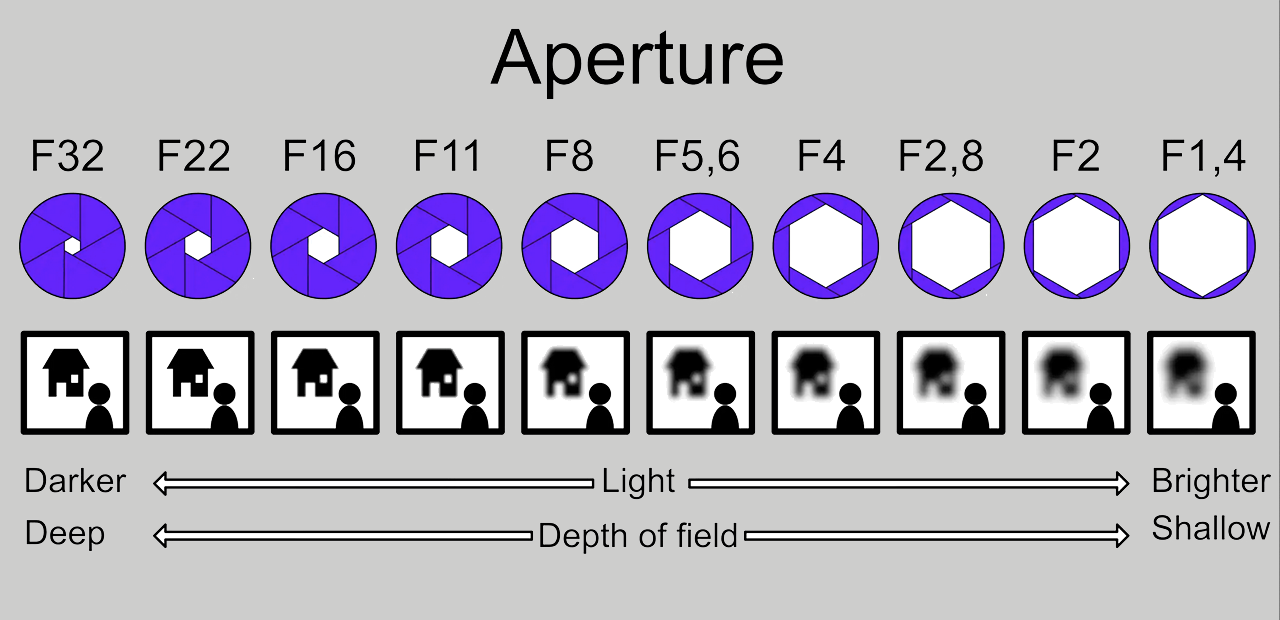
As you can see in the graphic aperture controls depth of field. As the aperture size increases, the depth of field decreases. If you want a blurry background for a portrait, use a large aperture like f/2. If you want a background that’s in focus, like a landscape shot, try a smaller aperture like f/11.
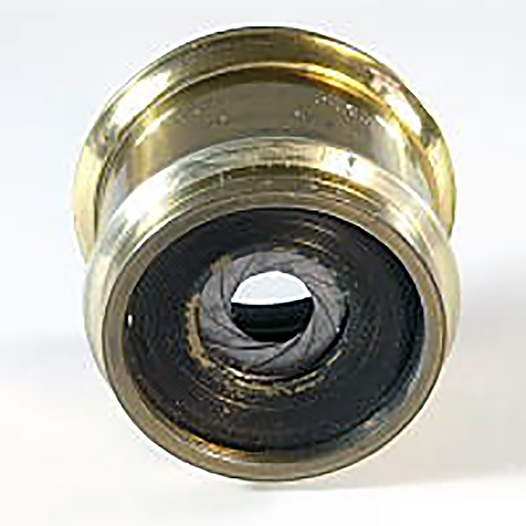
An iris comprises a number of curved leaves able to form an opening of varying size. The usual form is for each leaf to have a stud mounted at each end and on opposite sides of the leaf. On one side the studs fit into sockets in a ring on the other side the studs fit into slots in a second ring, as one ring is turned relative to the other the leaves move inwards or outwards so forming a varying sized and roughly circular aperture.
When introduced the iris was a more expensive option, as the cost reduced the iris became the common diaphragm from the early 1900s.
Early examples were demonstrated by Chevalier and Jamin in the 1840s and 1850s. It was much later though that the iris became commonly available.
A second form of iris was patented by Harrison and Schnitzer in 1858 where the leaves were broader and covered only half the diameter of the lens. Each leaf had two pins at the same end one acting as a pivot the other moving in a curved track to open and close the diaphragm. Not much use was made of the arrangement at the time but the idea was later used on combined shutters and diaphragms.
Other Forms
Sliding Stops consists of a number of holes punched in a strip of metal that slides across the opening. Found on cheaper cameras but also popular on continental hand cameras.
Noton Consists of two overlapping plates each with a diamond shaped opening. By moving the plates a variable sized aperture is formed. First proposed by Noton in 1856, a similar idea was used on the Sands & Hunter shutter of 1881.
Maugey Pierre Maugey patented (1858) an arrangement where the diaphragm was made by an elastic membrane placed across the lens, this had a small hole in it, the size of the hole could be adjusted by stretching the membrane. Maugey lenses fitted with this diaphragm were sold by Bland & Co.
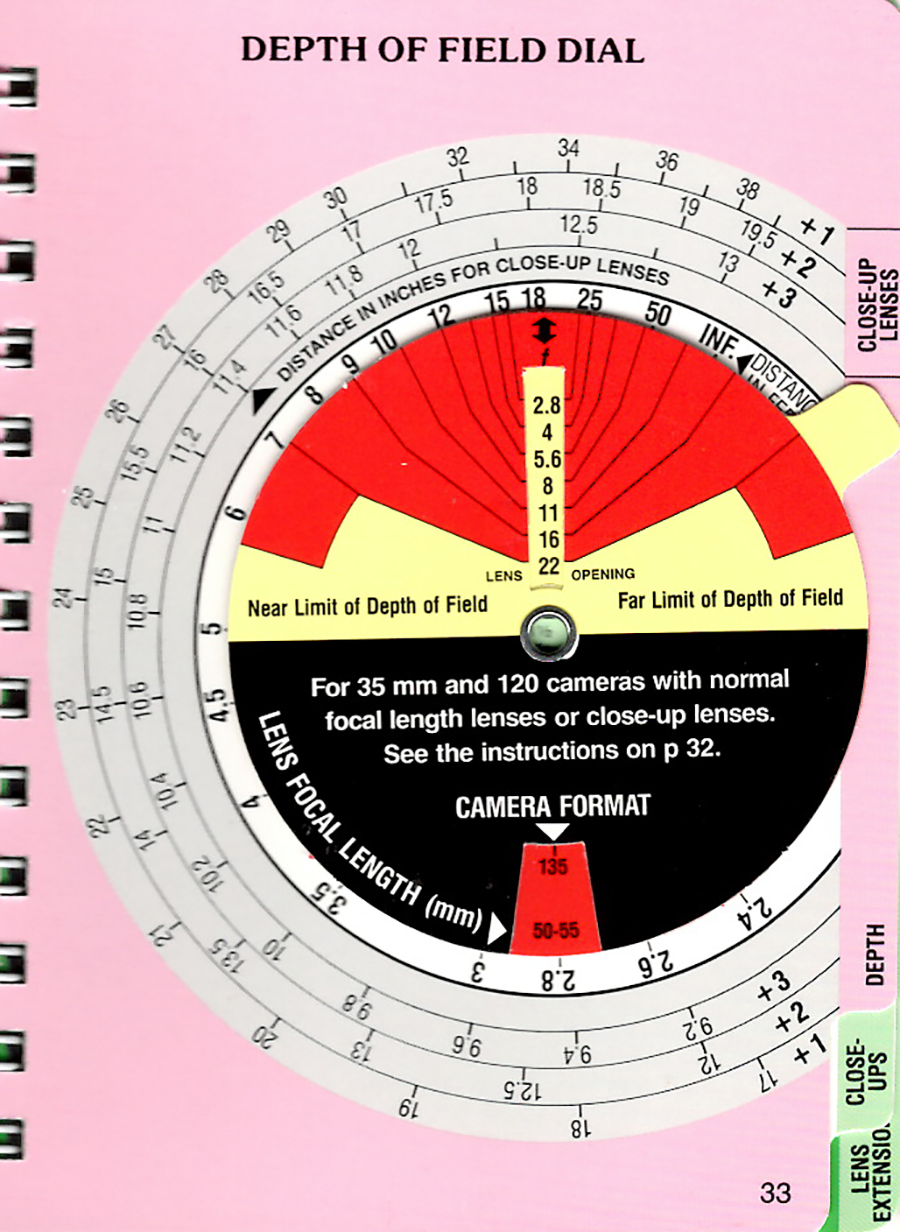
This is a part out of the super handy KODAK Pocket Photoguide AR-21 with dial calculators that serve as a guide to determine exposure, color balance and other picture taking settings. Included are a “sunny 16 calculator for outdoor-exposure, fill-in flash, Light balancing filters, B&W filter factors, Existing Light Calculator for difficult lighting, Electronic Flash exposure, Depth of field calculator for 35mm and 6×4.5, 6×6, 6×7, and 6×9 cm.
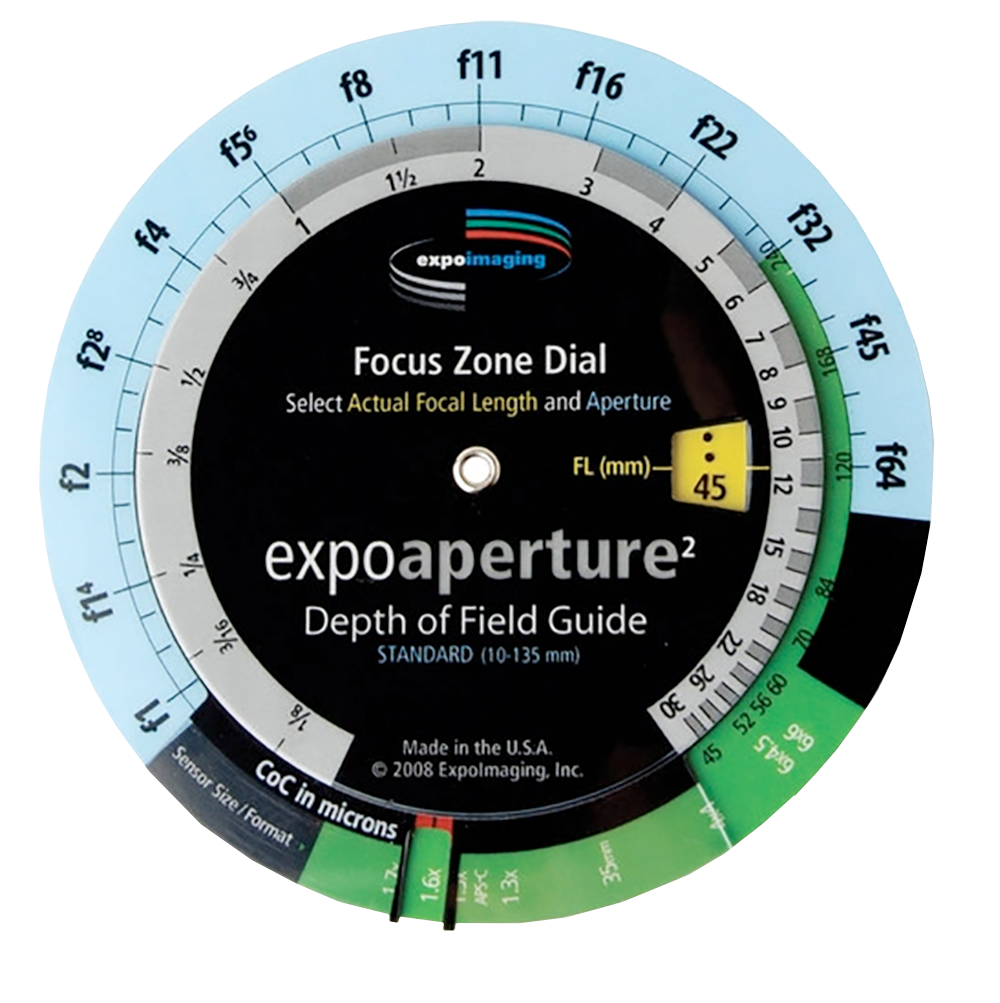
An example of a modern (2008) Depth-of-Field Guide
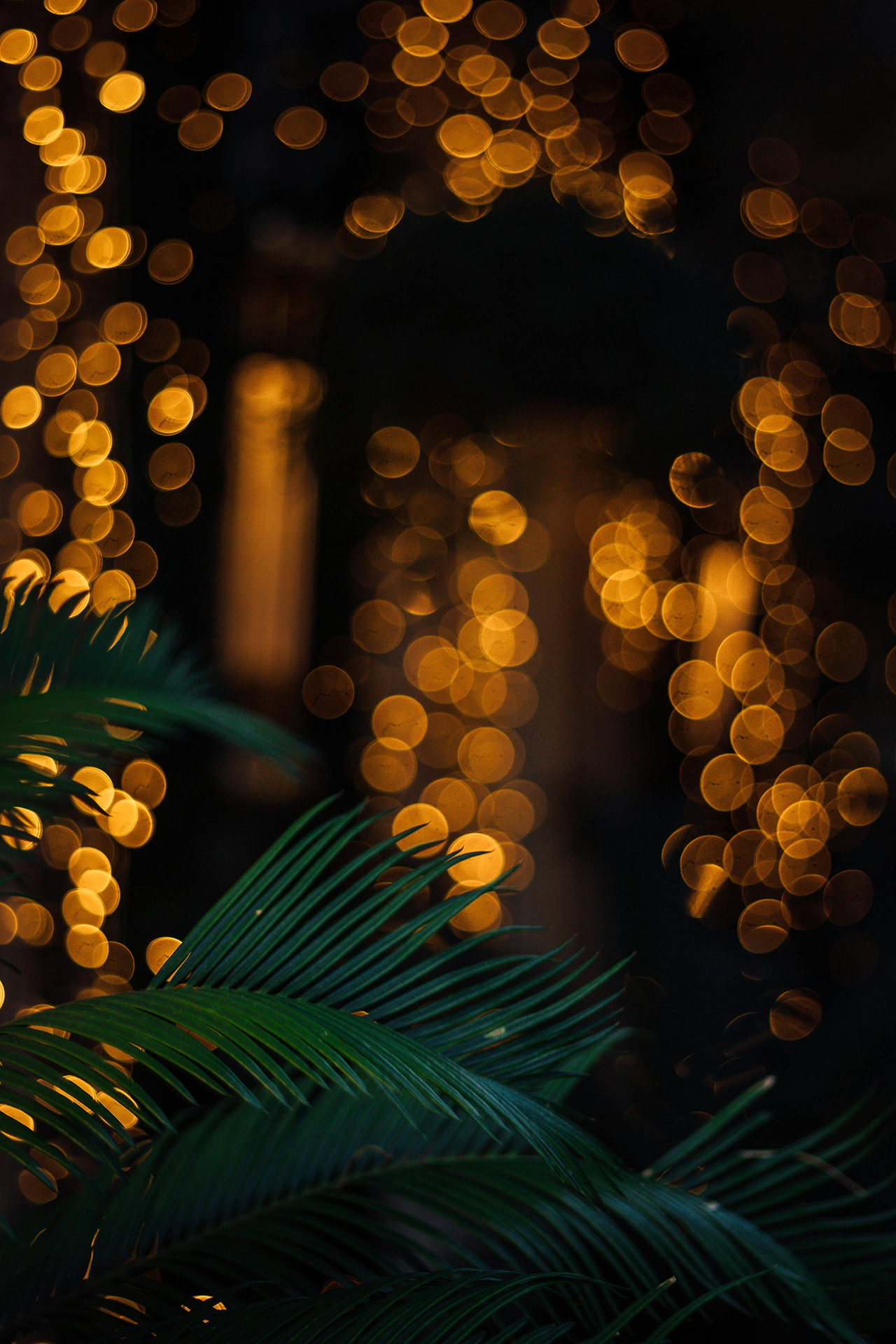
Green Leaves With Yellow Lights
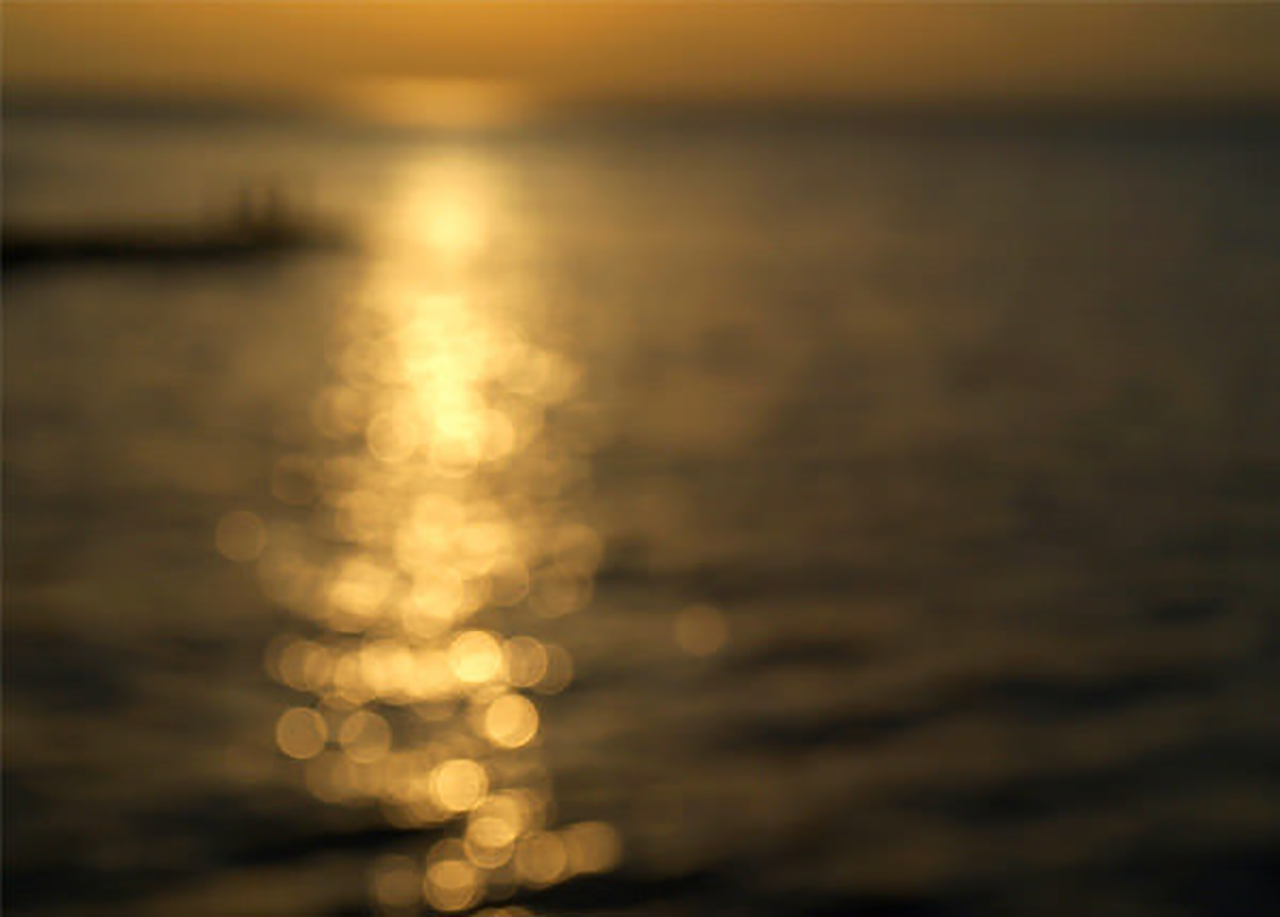
Light on water has long been a favorite subject matter for photographers, and a touch of bokeh produces a particularly sedate aesthetic.
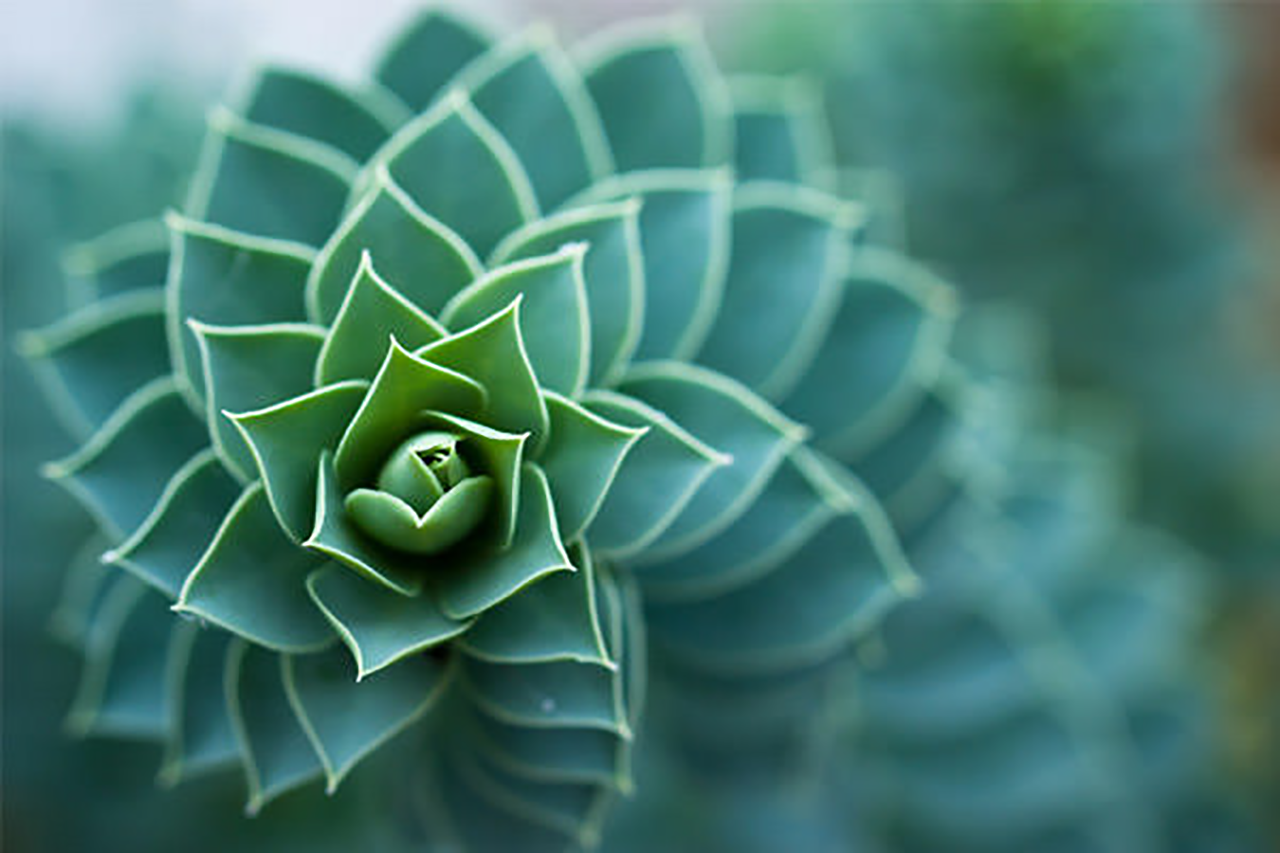
Many of the spirals found in nature are based on the logarithmic principles of the Golden Section, such as the receding body of a plant as seen in this bokeh image.
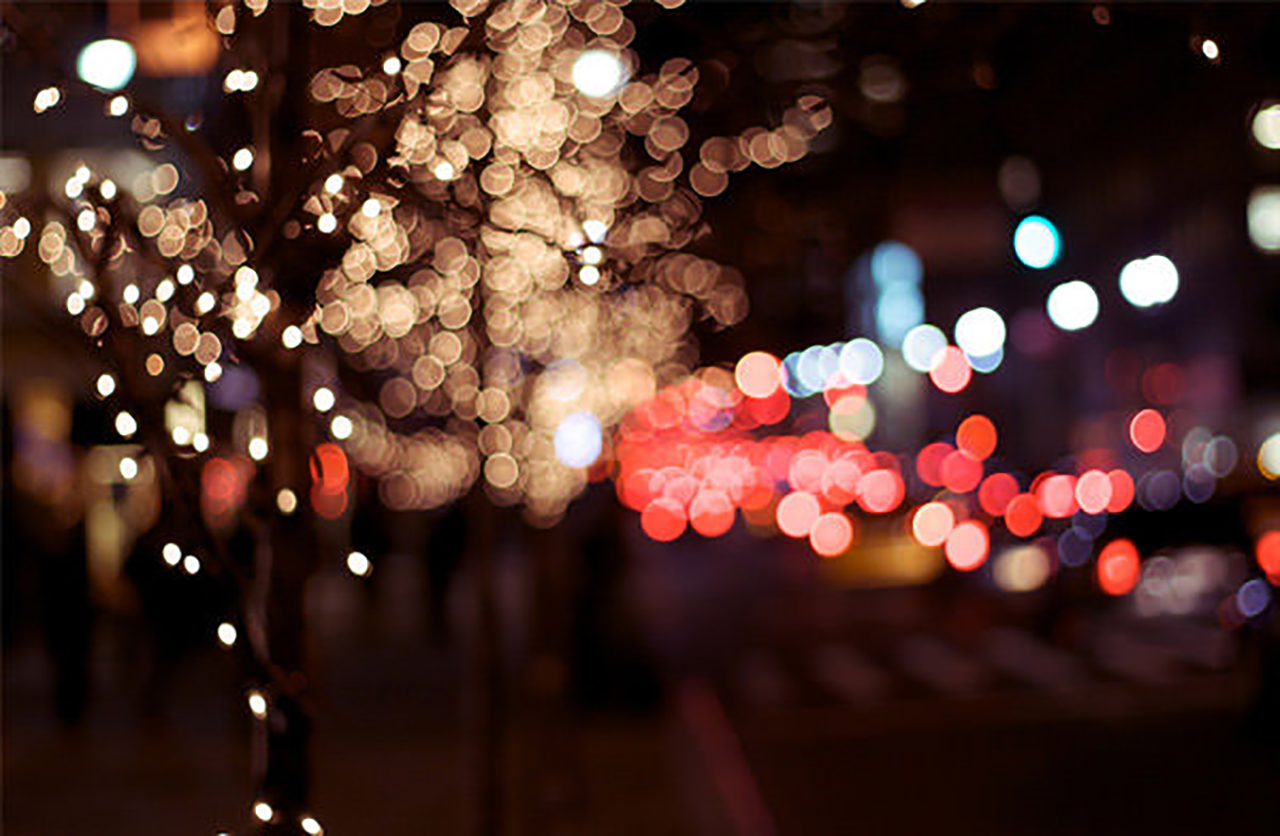
DeaPeaJay expertly handles the balance between the tree in the foreground with the lights of New York behind, achieving just the right level of focus and blur.
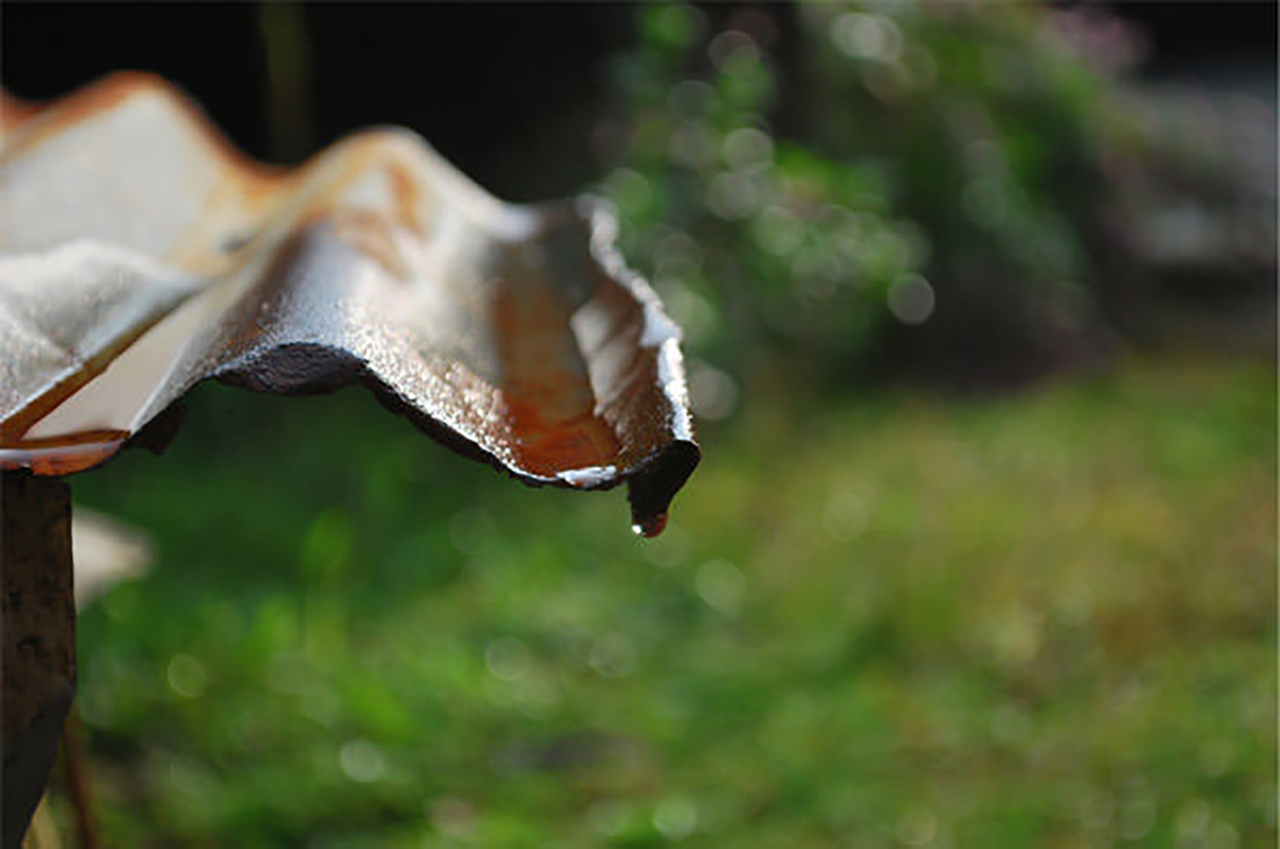
This image was captured when the photographer visited Shivamogga, in the Indian state of Karnataka. The corrugated iron roof, rivulets of water and glistening, blurred vegetation are characteristic of the subcontinent’s monsoon season.
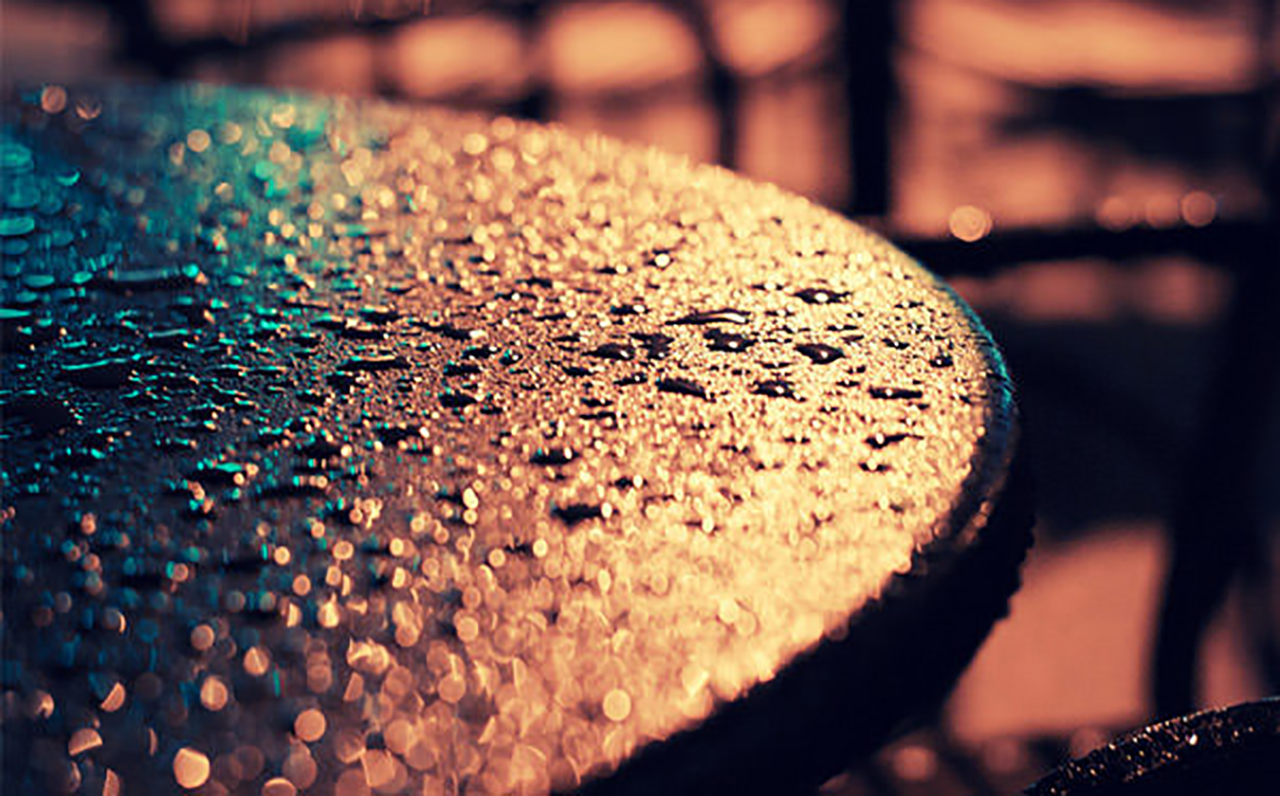
The combination of blur, water, tonality and colouration in this image creates a melancholy yet alluring atmosphere.
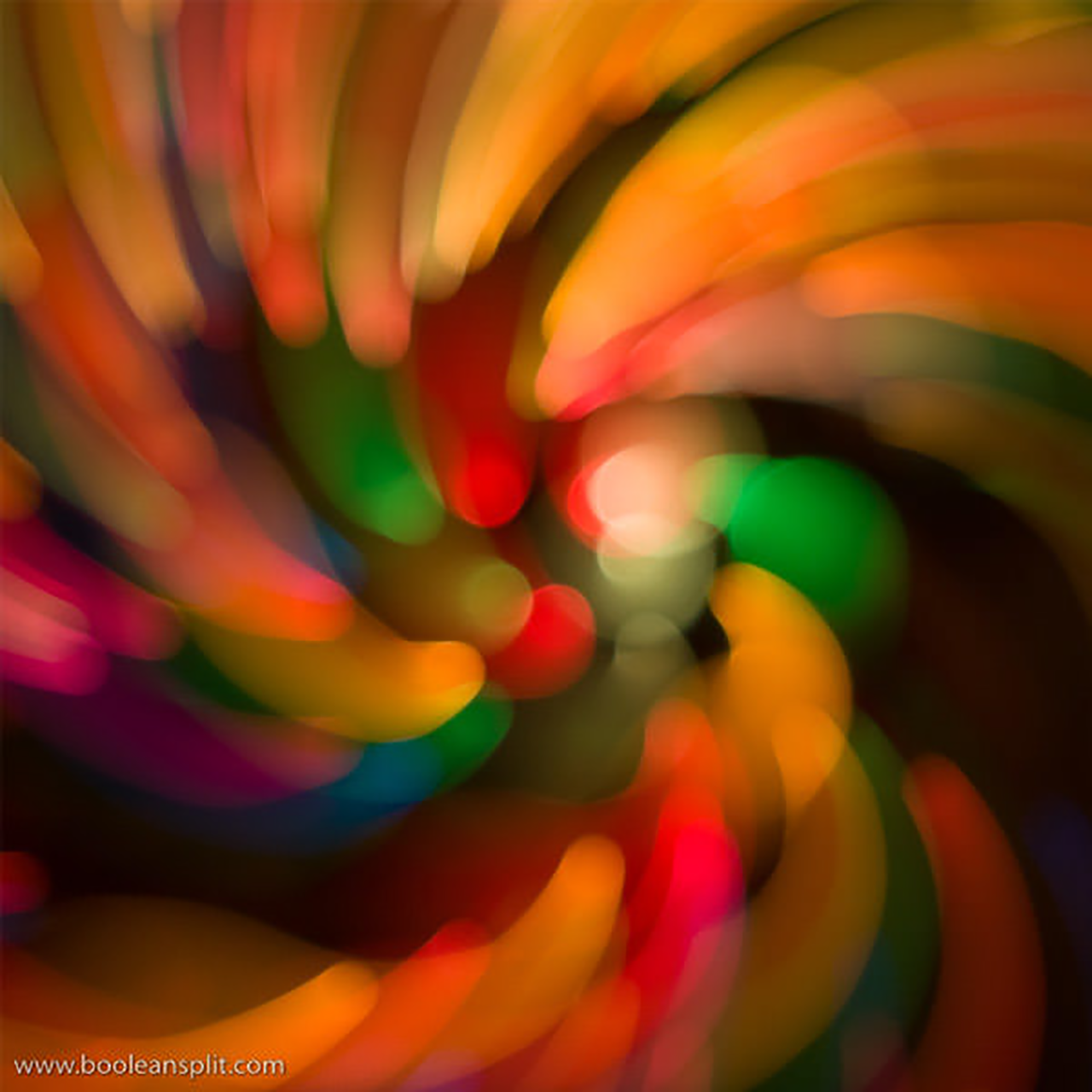
A close-up shot of Christmas tree lights, resulted in this colorful spiral.
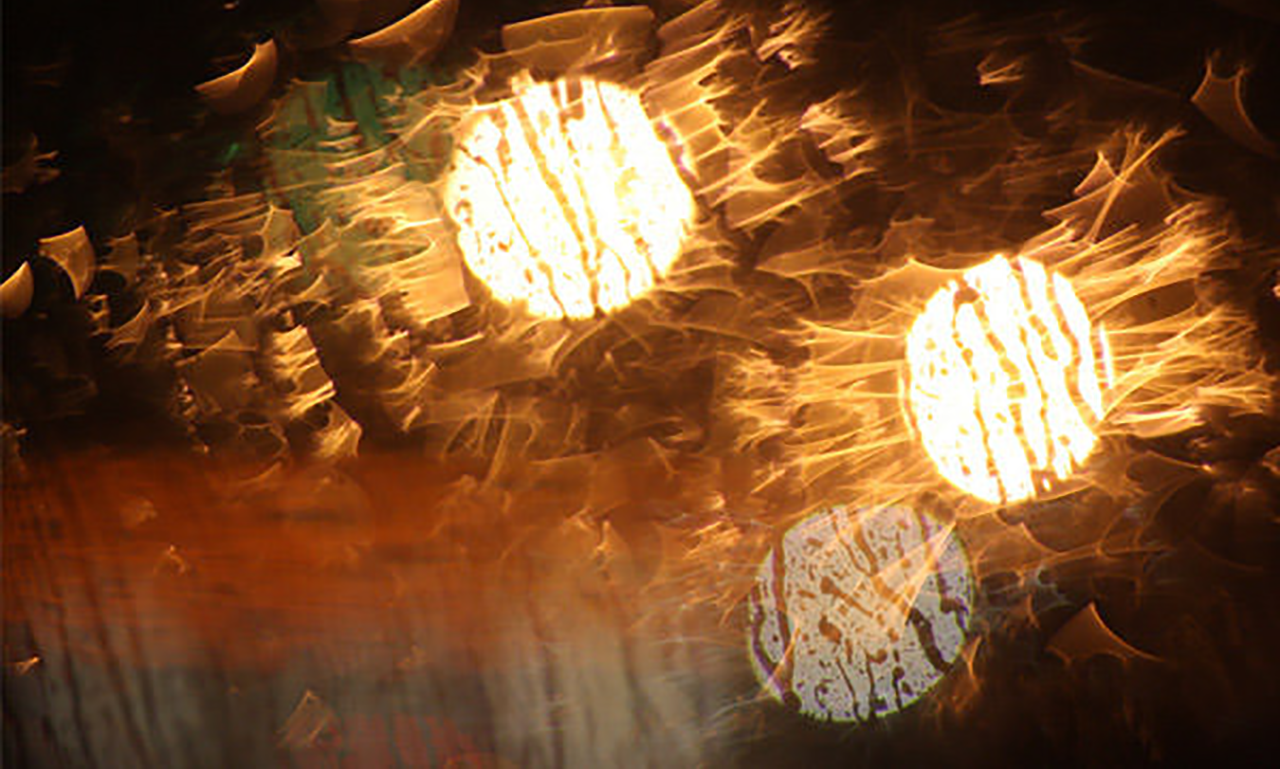
The feathered light in DucDigital’s bokeh photo has an ethereal, dream-like quality.
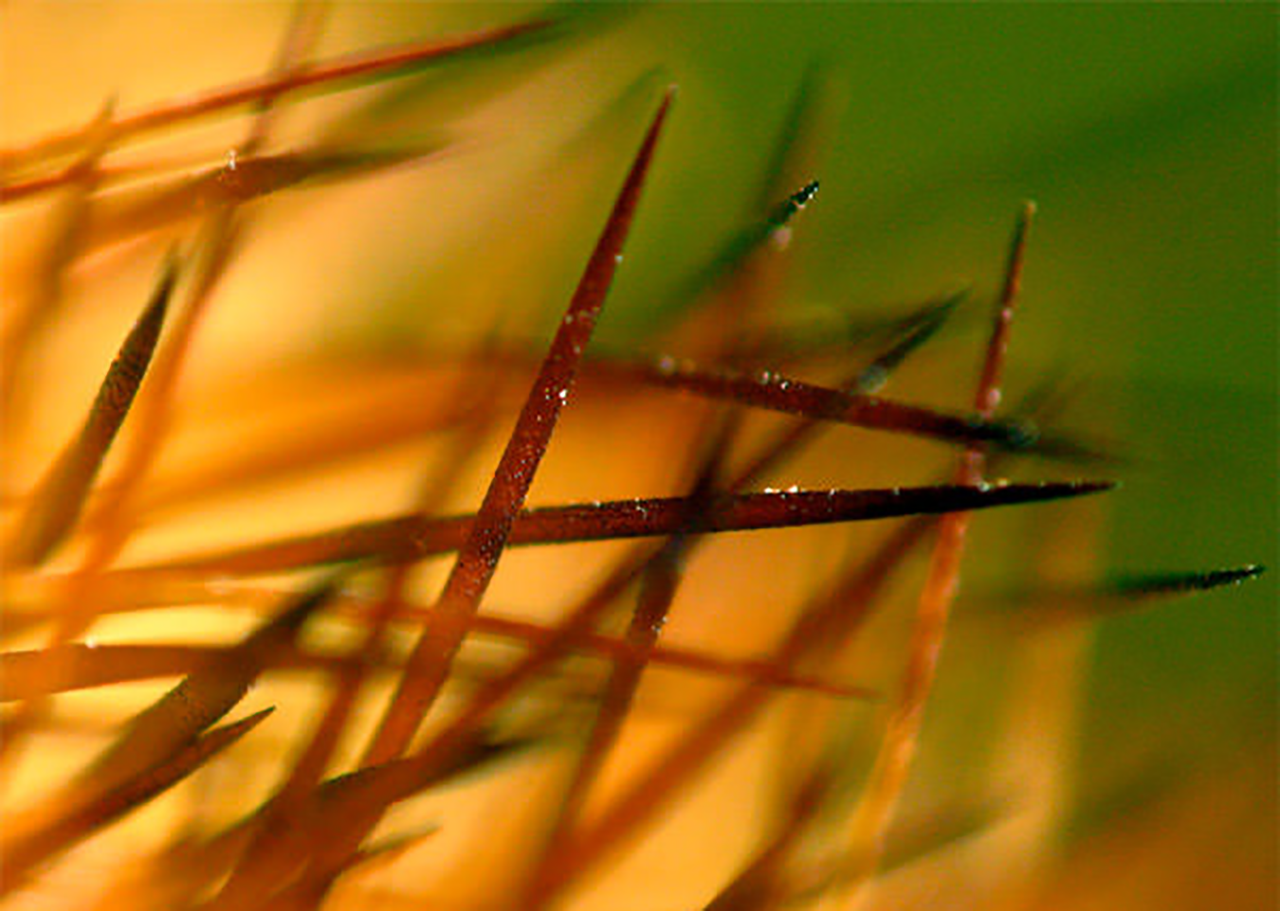
This macro image of the miniscule hairs on a cactus uses an extremely narrow field of focus to achieve the sensual bokeh effect.

Because it is also a topic, I have dedicated a few special comments to the bokeh effect (the aesthetic of the blurred quality or effect seen in the out-of-focus portion of a photograph taken with a narrow depth of field). Although someone who has grown up with classic analogue photography tends to feel a tired frown at the term BOKEH, this topic still needs to be discussed a little.
To clarify, I show two image examples. These in turn may elicit a bored “so what” from the modern bokeh fan, but in my opinion they impressively show the different reproduction characteristics of two completely different lens designs.
The first of the two images below left was taken with a classic Biotar 1.5/75 at wide open aperture.
The second photo comes from the same location and with the same ambient lighting with an Olympus digital zoom lens, also with an open aperture and 42 mm focal length. Both photos taken with an Olympus Digital SLR. In both cases the focus was on the front flower branch, shooting distance 5m. Excerpts of the same size were created from the original images, which were slightly different in overall format, without further processing using an image program. I think the result needs no explanation.
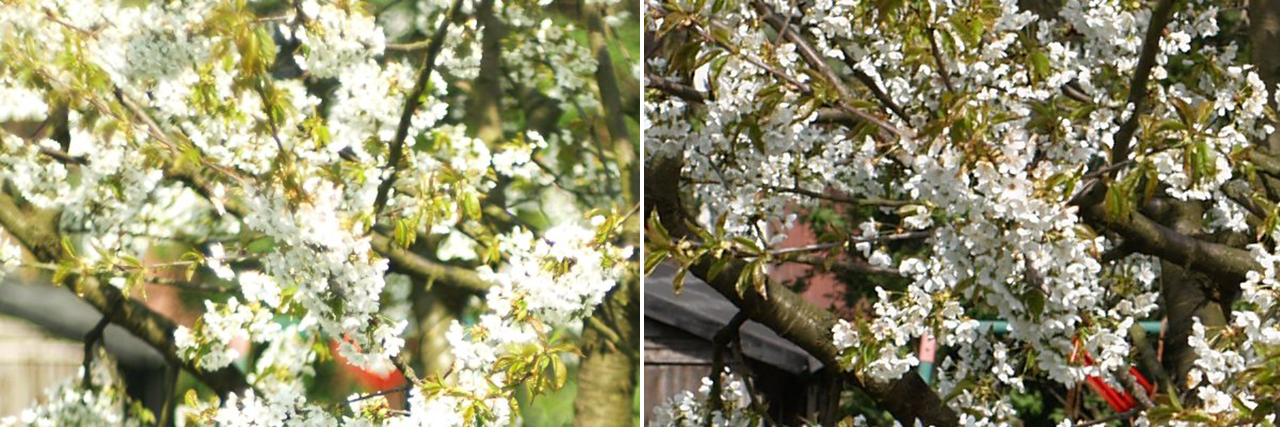
In the mid-1990s, a discussion about the “good or bad bokeh” of photographic lenses began outside of traditional photography circles. Photo freaks, who were constantly tempted to take up photography by new technical gadgets, became increasingly disappointed with the boring image results produced by expensive multi-automatic machines and digital cameras. Somehow it deeply touched the new type of amateur photographer. Why were old photos more meaningful – despite all the technical perfection, optimal exposure and detailed sharpness of modern photographic devices?
As always with something like this – because you don’t want to admit your own inadequacy, technical explanations were sought. As visibility has become more global, Japan – which has long been the country of photographic technology par excellence – has found a sonorous word that could serve as a basis for the new talkativeness – BOKEH.
A fundamental new photographic discovery? Probably not! The image results of good photographers have always been admired. Something like this had to be possible for a dedicated “digital photographer” with current technology without massive use of Photoshop!
Classically, such meaningful images were described as “shining lights,” “fantastic visual effect,” or something similar. In the old days, photo-educated amateurs also liked to use attachments such as soft focus, grid filters or the like. Professionals also worked with special lenses, such as the Rodenstock Imagon. Those who knew their stuff really well used 3-lenses, such as Trioplan or Triotar, or bright Gaussian constructions, e.g. a Biotar or Heligon. It is no coincidence that classic lens designs with such image effects are currently experiencing a renaissance.
As described in the previous paragraph on depth of field, creative photography likes to deliberately keep the foreground and/or background out of focus in order to draw attention to the main subject. In the out-of-focus areas – outside the respective depth of field – some lenses draw many bright circles under appropriate shooting light, other lenses also draw other shapes. Color or contrast can also show differences, as can the transition from the sharp to the blurred image area. These different appearances of the out-of-focus areas as well as the type and quality of the transition have been described as the bokeh of a lens for some time now.
Depending on the lens, this transition between the blurred foreground and the blurred background can be different. Sometimes what is perceived as a pleasant rendering of the background is accompanied by an unpleasant rendering of the foreground (or vice versa). However, this “bokeh” is not a clearly definable optical quantity, but rather a decidedly subjective sensation. It also depends to a large extent on the respective motif. In the usual holiday beach shot, bokeh efforts are usually a waste of time… Precisely because it is difficult or impossible to measure, it is controversially discussed.
The depth of field effect, already known in classic photography, is probably the historical forerunner of modern bokeh. In both cases the “circles of diffusion” are responsible for the effect. Normally, for photographic imaging, a clearly defined point (more modernly one could also say pixels) is desired for image sharpness. If this is achieved and the incident light rays do not cause simultaneous halos next to them, the lens also has a high brilliance. Most lenses are designed to achieve this optimally. If the lens is not designed for optimal sharpness, i.e. the image point is enlarged slightly at the expense of the resolution, a higher contrast is achieved.
Regardless of this, outside the plane of focus (i.e. the area to which the distance has been correctly set), every point of light becomes more or less blurred. The further the point is from this plane of focus, the larger the circle of diffusion becomes. With extremely sharp lenses, this optical normality is not taken into account because it is technically unsolvable anyway and in practice it is usually meaningless when absolute sharpness is required (e.g. when taking photos of objects). Nevertheless, this dispersion is created by every lens in the image. Depending on the construction, this can be ring-, disk- or box-shaped or take on other geometric shapes and is evenly lit, brighter in the center of the image or near the edge of the image. It usually occurs in the form of the aperture or entrance opening of the lens.
Because bokeh is more of a subjective sensation, lens properties for “pleasant bokeh” cannot be clearly defined. I think it is unlikely that there will ever be a measurable quantity, such as film speed in ASA or DIN. The technical triggering factors for the bokeh remain largely speculative.
Nevertheless, a few attempts at explanation:
Number or shape of aperture blades
The iris diaphragm is often seen as the cause of bokeh. The number and shape of the aperture blades are intended to create foggy or hard bokeh. As the number of aperture blades increases, an almost circular aperture opening without spikes can be achieved. This is said to be responsible for a little noticeable bokeh. If fewer blades are installed (usually in automatic lenses), they are often given a sophisticated shape so that the pupil comes as close as possible to the circular shape at all aperture settings. This technical peculiarity is undoubtedly responsible for the shape of the circles of confusion in the area of blur.
Lens construction
Of course, the length of the lens and the shape and number of lenses also play a role. In general, zoom lenses or short telephoto lenses are at a disadvantage compared to normal, classic designs. In principle, many photographers find the bokeh of classic lenses of normal design to be pleasant if they do not strive for other properties such as sharpness or contrast.
Effect of light intensity, focal length
In general, fast lenses are considered to have pleasant bokeh, especially if they have a lot of aperture blades. This is mainly due to the fact that with a large aperture there is little or no depth of field and therefore the area of blur becomes more apparent. In addition, the image is softer at high light levels, which is not just important for bokeh fans. Of course, the shape of the aperture only comes into effect when the lens is dimmed down.
According to these criteria, the so-called portrait lenses with focal lengths of around 100 mm are particularly popular. It’s not all that new that medium focal lengths are an excellent compromise between lens size and weight, shallower depth of field and spatial representation of the subject.
Summary: good or bad bokeh
Bokeh refers to the transition area in the image between the (sharp) subject plane and the blurred rest, i.e. foreground and background. Bokeh now describes what this out-of-focus area should or looks like, for example soft or hard, calm or restless.
In general, it can be said that high-speed lenses that cannot be corrected to the maximum – usually older designs – have good bokeh. Lenses with a lot of distortion (extreme wide angle or telephoto, universal zooms), on the other hand, are no friend of bokeh fans. Even extremely sharp focus or macro lenses – never the favorite lenses of fans of creative photography – will certainly not be a hit with bokeh. On the other hand, classic triplets, symmetrical lenses or short telephoto lenses with lower light intensity are also in the green range.
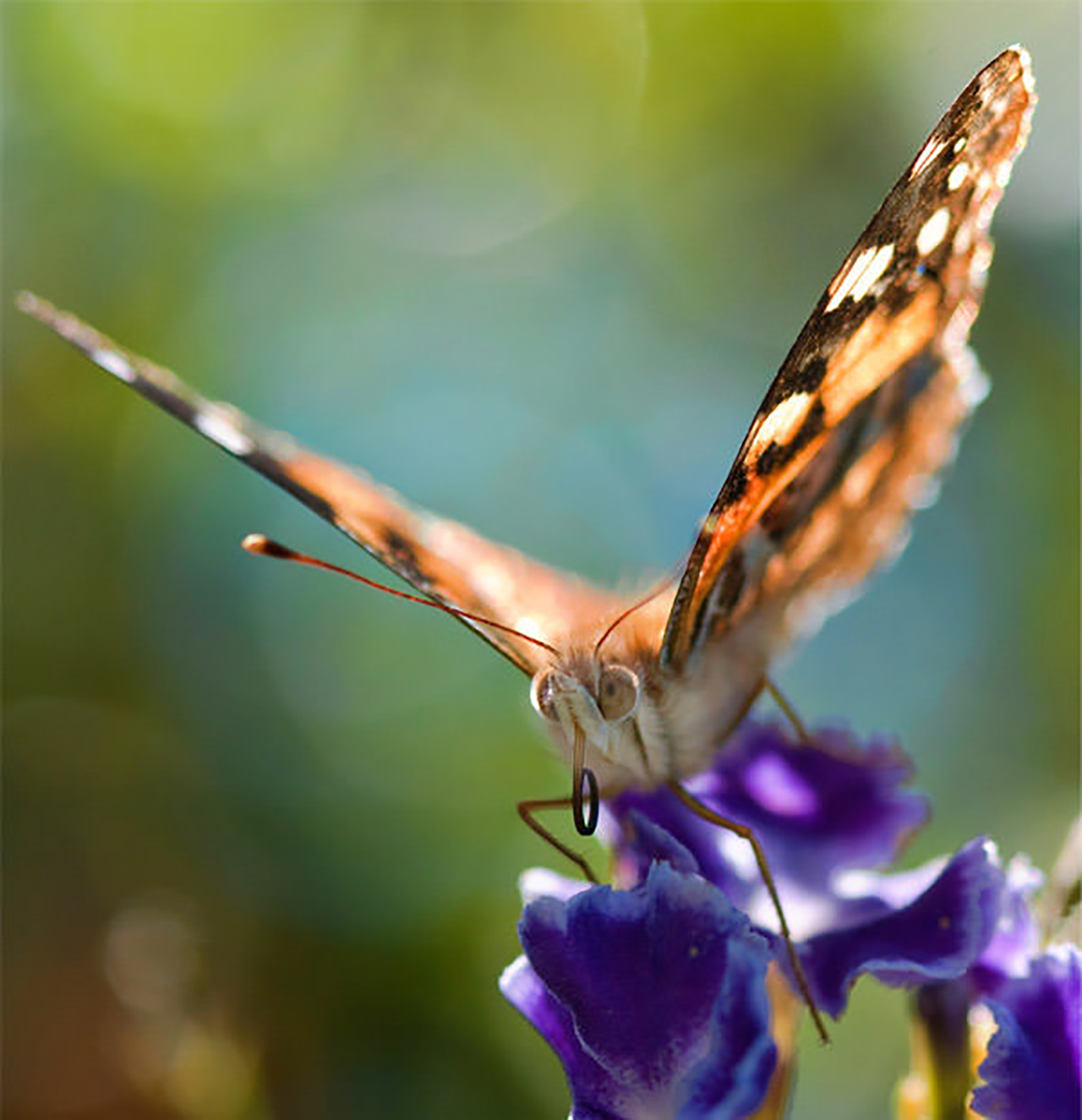
Bokeh photography can transport the viewer to an almost alien world of scale and color, such as this beautifully composed image of a butterfly.
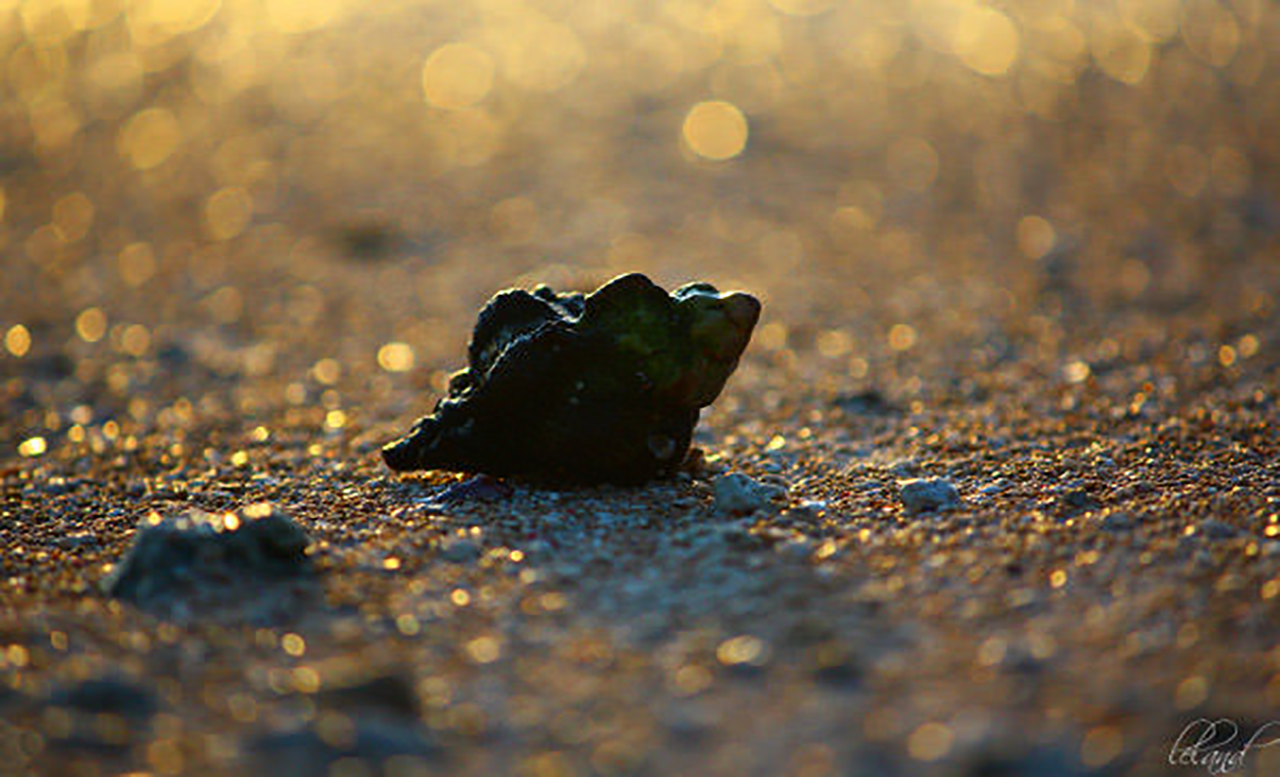
A hermit crab shelters inside its shell, with the masterfully handled bokeh effect on glistening pebbles creating a sense of sunlit depth.
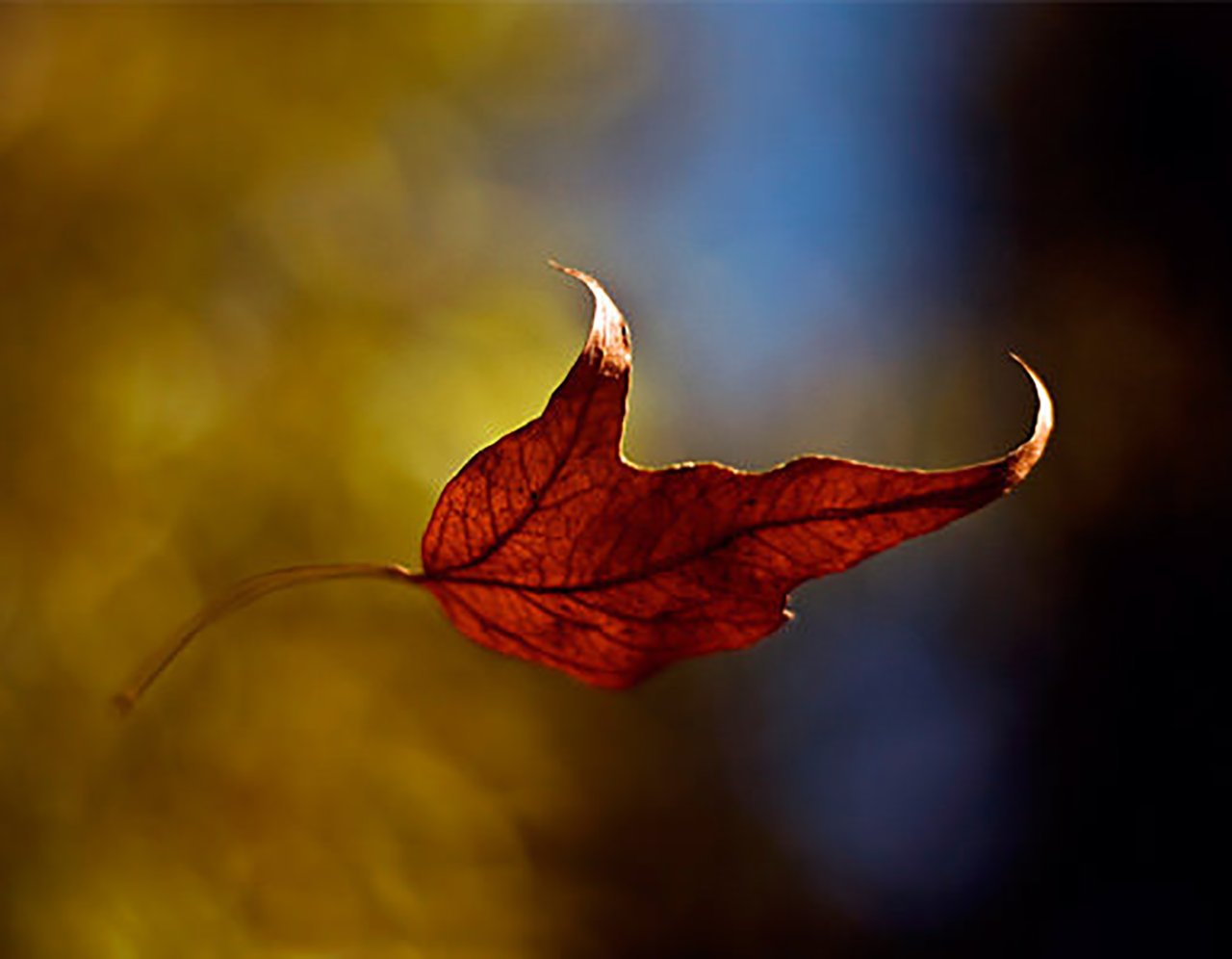
It took a lot of patience to achieve this image, but finally the photographer managed to capture the fine detail of a falling leaf’s desiccated flesh against the blurred autumnal colours of the background.
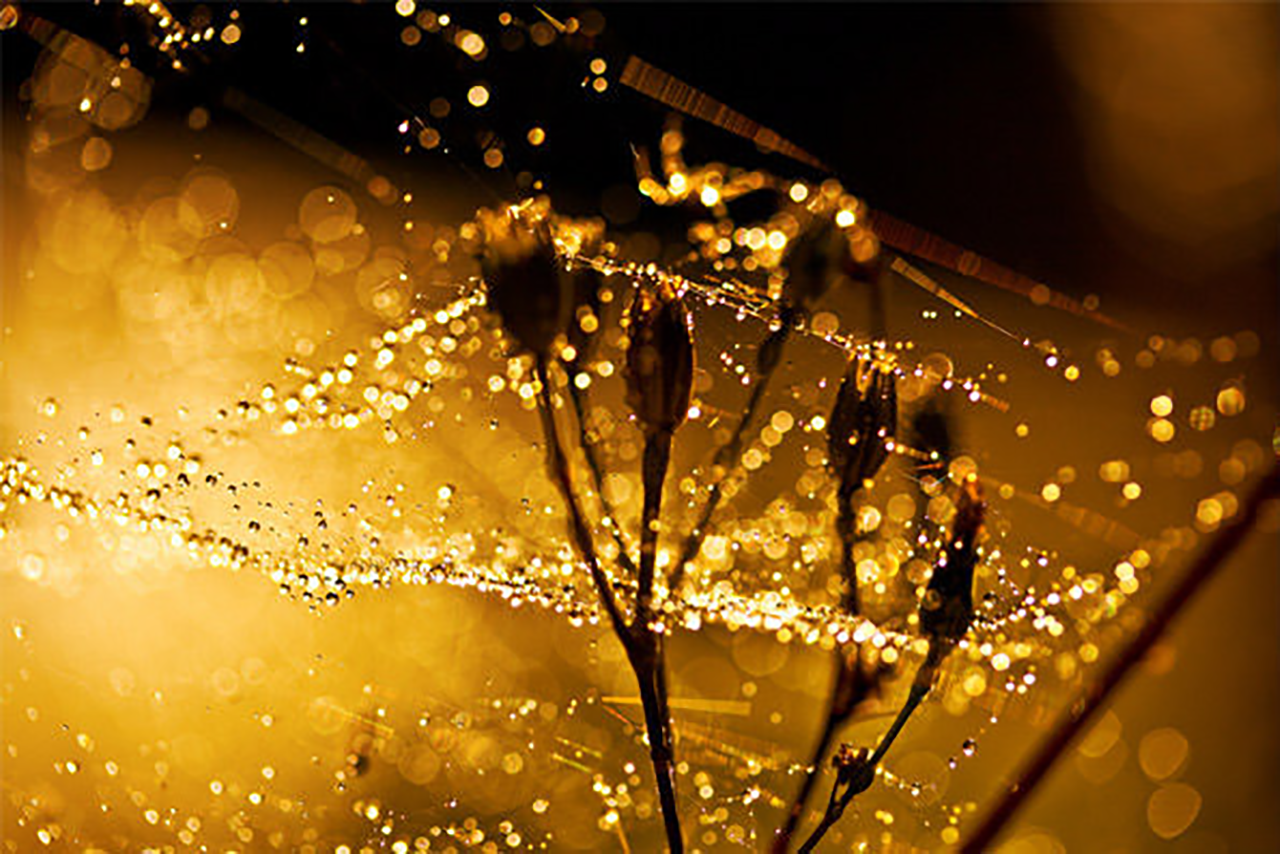
Niffty’s beautifully rendered photo captures the play of golden light on plants, cobwebs and sparkling dewdrops.
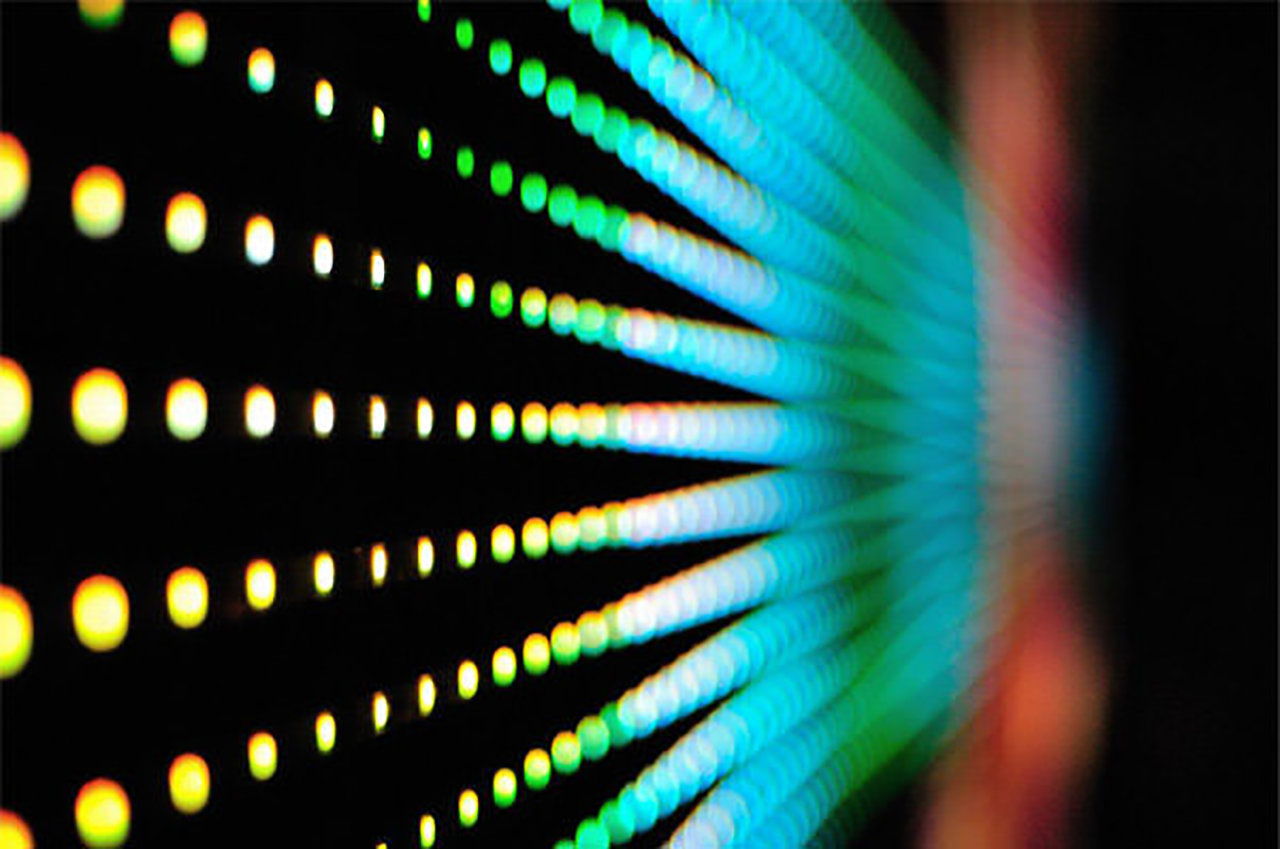
Bokeh photographs often feature greater blurring on lights that are further from the camera, sometimes producing startling geometric effects, such as this shot by Zen-Shooter.

Robert S. Donovan’s tasty bokeh shot has a sizzling burger set against a barbecue’s blurry burning embers.

Kevin Law’s bokeh image is another to take nature as its subject matter, with the pretty forget-me-nots’ summer blossoms set against the blurred greens of an English meadow.

This superb shot juxtaposes a sharp focused mug against blurred lights for a touch of bubbling bokeh.
Brief overview of the different types of lenses
One of the strong selling points of a camera manufacturer was the marketing of its own complete camera system. This means a camera body with a variety of accessories and interchangeable lenses. With that in mind, I refrain from presenting an overview here of the many hundreds, but rather thousands of lenses that have ever been brought onto the market.
Here I limit myself to a number of examples of certain types of lenses, related to the field of application for which they were designed. Taking the Photobutmore website as an example, lenses can be divided into 5 groups depending on the lens design and intended use as follows:
- Lenses with a standard focal length of 45-58 mm, also called normal lenses
- Lenses with a shorter focal length than 40mm, usually wide-angle lenses
- Lenses with longer focal lengths from 75 to 250 mm, usually telephoto lenses
- Long-distance lenses with very long focal lengths, from 300 mm
- Special lenses, macro, soft focus, zoom etc. and lens attachments.

Most of the illustrations and information of this survey come from the site of photobutmore.de
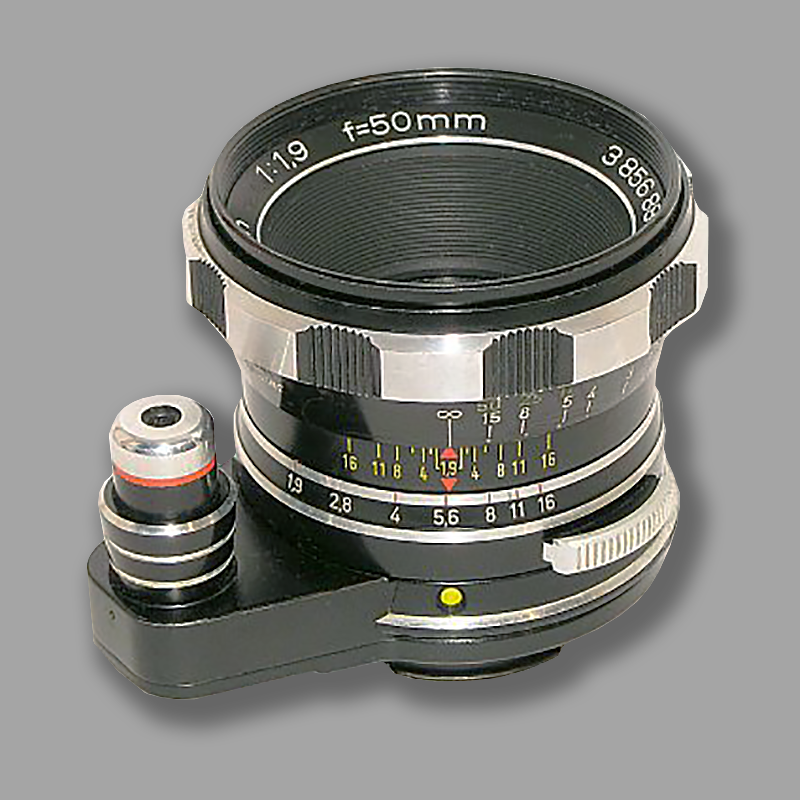
Rodenstock Heligon 1,9/50 mm
Rodenstock chose the Heligon 1.9/50 mm, which had already proven itself in other mounts, as the “normal lens”, but with an angle of view of 48°.
However, Rodenstock managed to achieve 50 mm focal length with the Heligon despite tight tolerances. At that time, comparable lenses were only available from P. Angenieux (S21) and Schneider (Xenon). Although the Heligon 1:1.9/50 mm with its image angle of 48° made the standard focal length of 50 mm possible for SLR cameras, it failed to achieve a resounding success. The lens with automatic pressure aperture (as shown above) was only available for three years for the Exakta and with an M42 thread for the Edixa.
- Origin: Munich, Germany
- Year: 1956
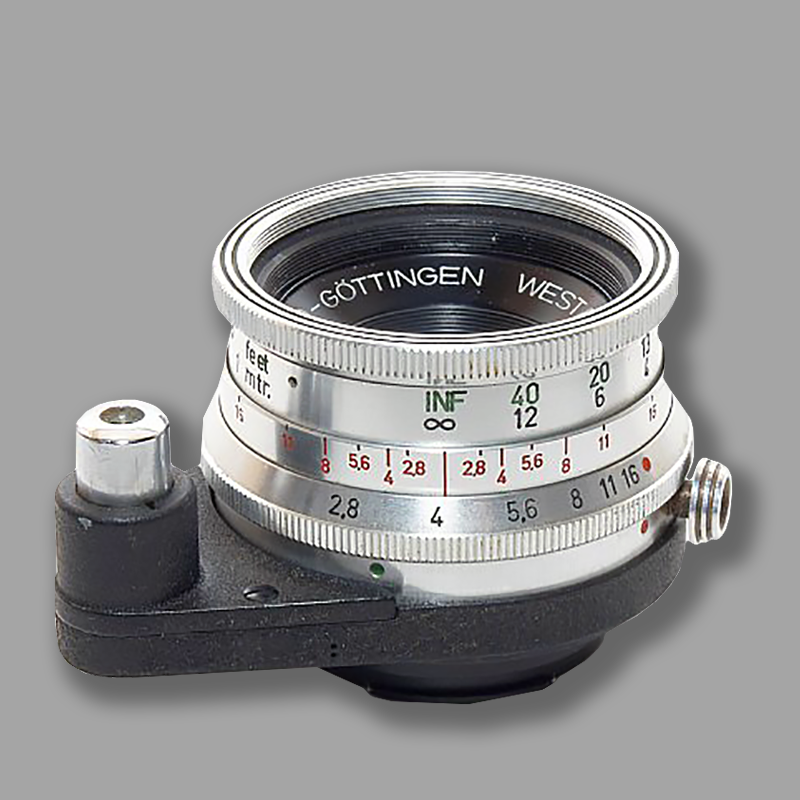
ISCO WESTANAR 2,8/50 Version 2
Lens from ISCO Germany, with fully automatic pressure aperture, from 1953/54. Aluminum frame with black textured release bar, left-handed distance adjustment with meter and feet markings.
High-quality 4-lens Tessar construction, pressure aperture can be switched off, with worm gear focusing. It was initially only exported and used in the USA to equip the Automatic Exakta and Automatic Exa. There, an Exakta with this lens cost $239.50 in 1952; Retail price $69.50.
This Westanar was available in Germany from around 1954 for 210 DM, and about 2 years later with a trigger arm also for the Edixa.
- Origin: Göttingen, Germany
- Year: as from 1952/54
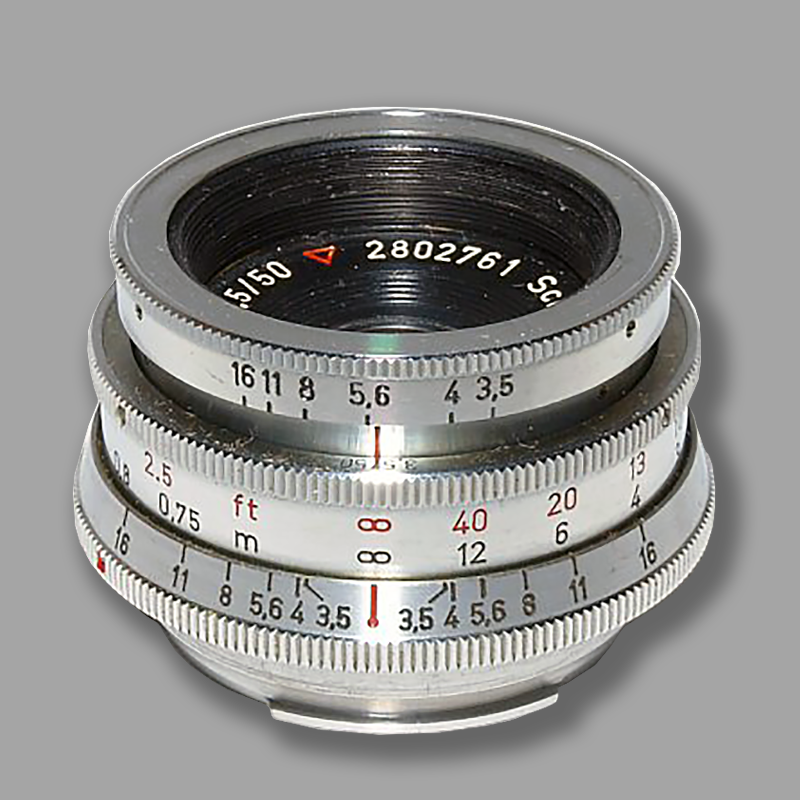
Xenar 3.5/50mm chrome-plated brass socket
At the beginning of the 1950s, anyone who spoke of Schneider optics still meant the Xenar – the oldest in the line of lenses for 35mm cameras. Price 130 DM (according to the Schneider price list 1951/Ihagee price list 1955).
In its basic design it is a four-lens modified triplet, a Cooke or Taylor type from 1919. The lens was recalculated in 1948; However, this affected this less than the faster 1:2.8 version in which the 5th lens was omitted.
Normal aperture 3.5-16, image angle 45°, filter A40, close-up range as from 0.75 mtr. The Xenar, like the optically similar Elmar, Primotar, Tessar and others, is an excellent sharpener.
- Origin: Kreuznach, Germany
- Year: as from 1951
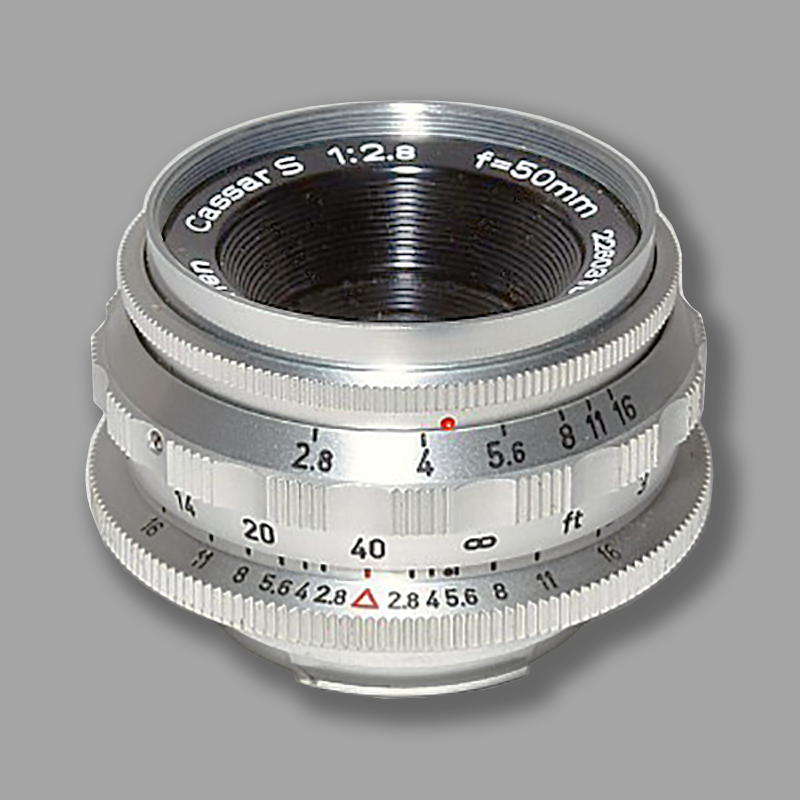
Steinheil Cassar S 2.8/50 mm
This three-lens lens with a full aluminum body, which is very common in 35mm viewfinder cameras, was not available with an Exakta connection in Germany.
As a standard lens from early Edixa’s, the Cassar was delivered quite frequently by Carl August von Steinheil’s optical works. In the USA, however, the lens was temporarily offered with the Varex VX or the Exa.
The design of the lens is very similar to the Culmigon 4.5/35. Other data: 3-lens, normal aperture or stop aperture 2.8-16; Image angle 48°, filter thread E40.5, close focusing range from 3 ft.
- Origin: Munich, Germany
- Year: 1955-1956

Carl Zeiss Jena Biotar 1:2 f=58mm
The standard lens Biotar 1:2/58mm can also be found painted black as a “luxury version”. The construction of the frames of the different Biotar versions is partly the same and partly different.
The lenses in this series usually have a normal aperture and were initially delivered uncoated. During production, all glass surfaces received a coating; These lenses can be recognized by a red “T” on the front ring.
In order to use the clip-on filters that were more common at the time, an adapter ring was often required for the Biotar – as well as for the Tessar. The size M40.5 was common for screw-in filters, but there were exceptions.
- Origin: Jena, Germany
- Year: 1950
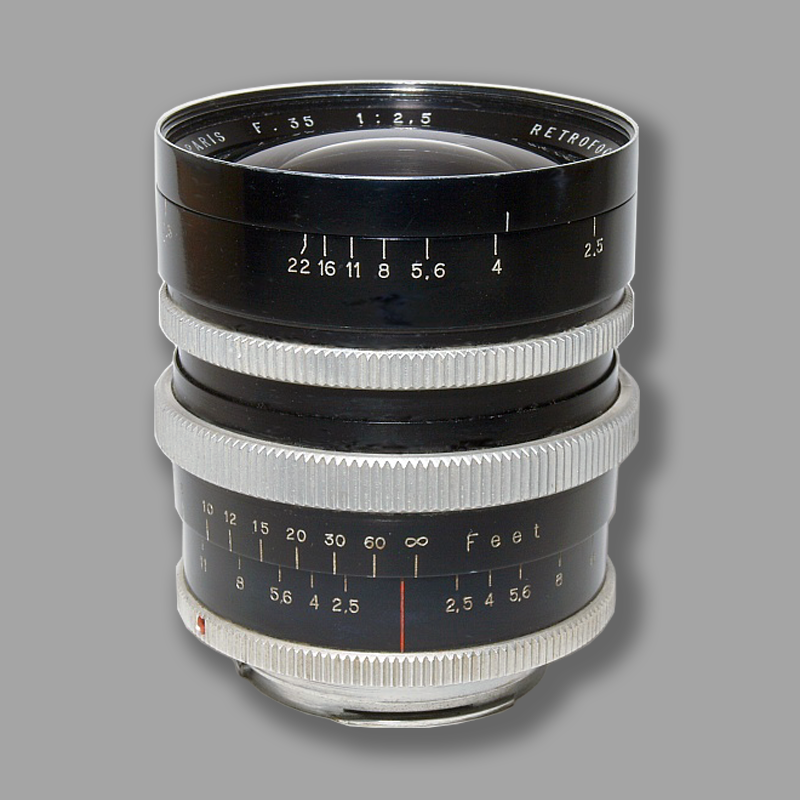
Angénieux R1 1:2,5-35 mm
First true wide-angle lens in the world, introduced in 1950 with a large diverging front lens. 6-lens construction with 63° image angle, normal aperture 2.5-22, filter thread E 58.5, with simple worm gear focusing without straight guidance from 3 ft. This first version has a black painted brass frame and aluminum grooved grip rings.
The R1 was Angénieux’s first SLR lens at the time. It was initially exclusively exported and therefore only had a distance scale in feet.
In the USA this lens cost $99.50 in 1954. Sales price in Germany 305 DM with Exakta connection (1954).
- Origin: Paris, France
- Year: 1950
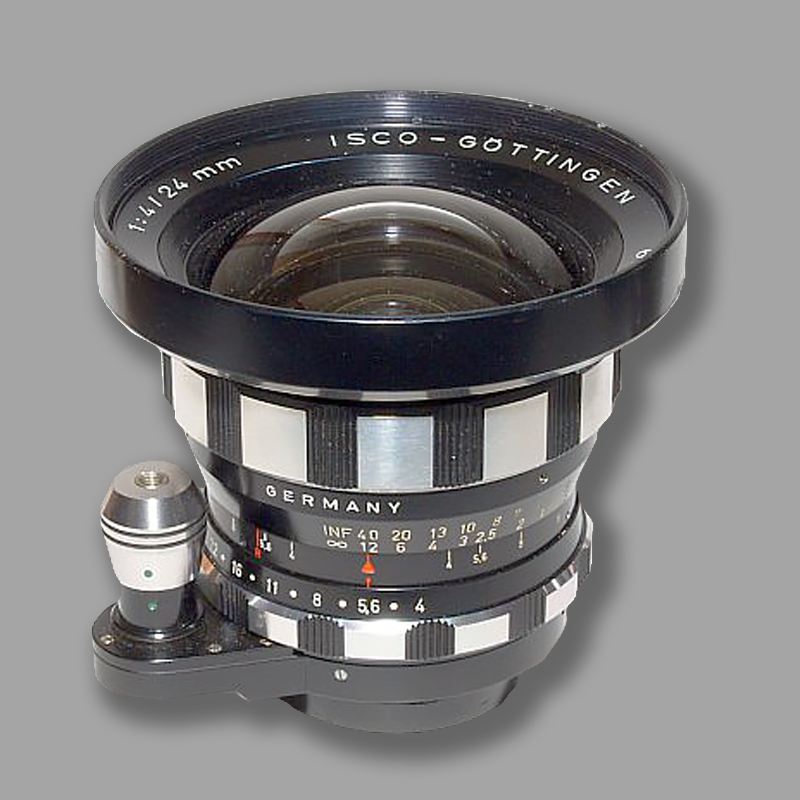
ISCO WESTROGON 1:4.0/24 mm
The first wide-angle construction from Göttingen immediately became a hit. When this product was first offered in 1958, the Westrogon was the world’s first extreme wide-angle lens for SLR cameras. Also equipped with a fully automatic pressure aperture. For the first time, a lens manufacturer managed to break the previously magical 28mm focal length limit!
The impressive data at the time: 8 lenses, pressure aperture 4-22, image angle 82°, filter thread 82mm, black painted brass mount in black/chrome ring design, close focusing range from 0.5m. The price – 490 DM according to the Ihagee price list 1958. fully automatic pressure aperture
- Origin: Göttingen, Germany
- Year: 1958
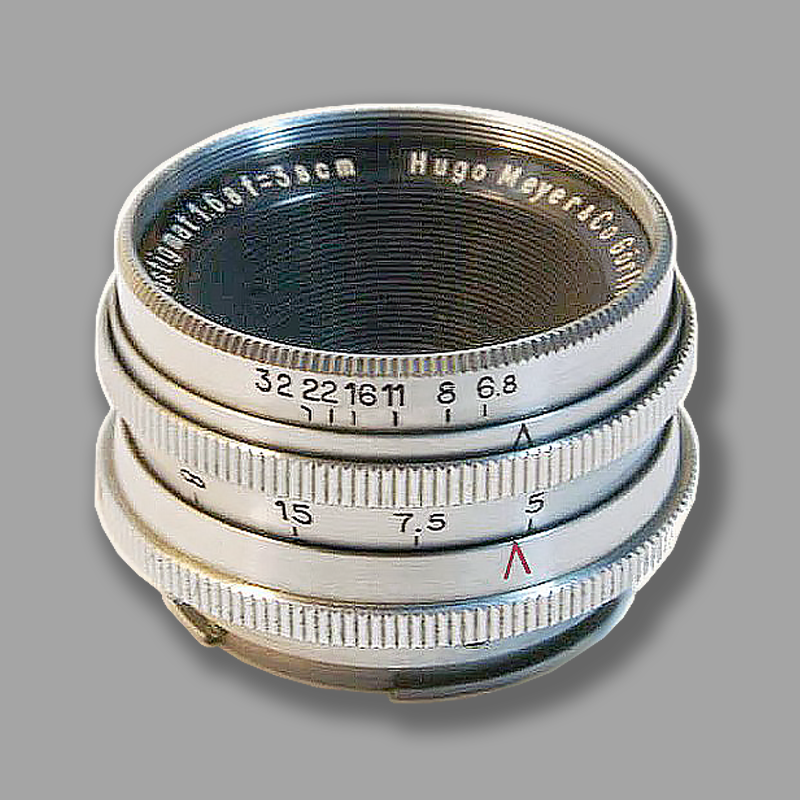
Hugo Meyer wide-angle double anastigmat 6.8-38mm
As already described with the 4.5/4 cm version, wide-angle lenses for 35mm SLR cameras were not yet available at that time because the rear lens of lenses with a shorter focal length was very close to the shutter cloth. The first “real” wide-angle lens didn’t exist until around 1950 with Angénieux’s retrofocus.
In the beginning, alongside a “shorter” Tessar 4.5/4 cm, the wide-angle double anastigmat with the same light intensity and focal length was one of the few alternatives, although the lens design of the wide-angle double anastigmat has a classic shape that was developed before 1900 .
- Origin: Görlitz, Germany
- Year: 1950s
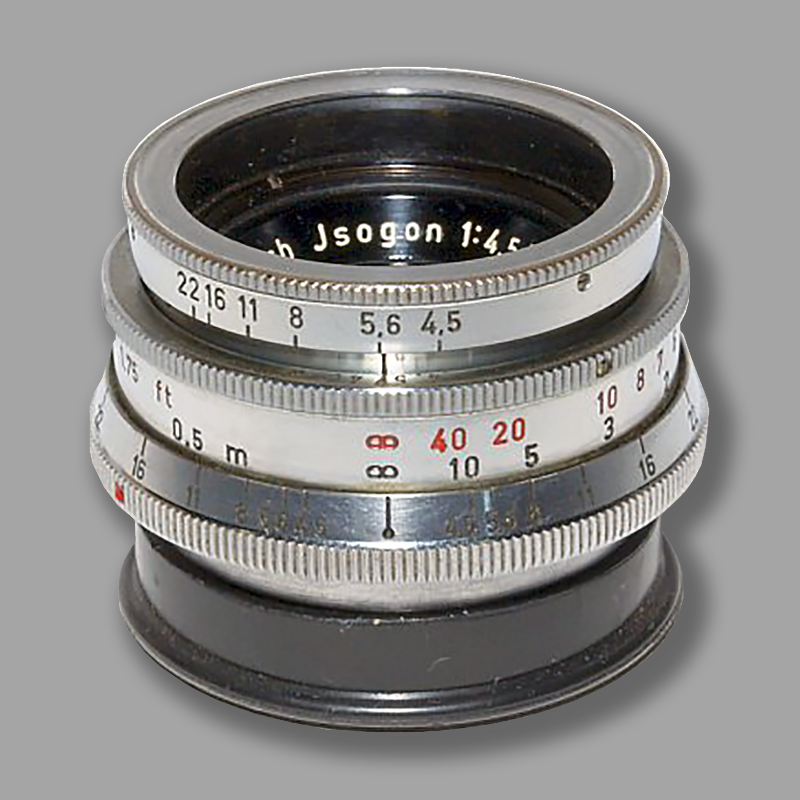
Schneider Isogon 1:4.5-40 mm
Short focal length normal lens in the classic design of a double Gauss lens, which has been used in a variety of ways by almost all lens manufacturers for decades. The rear lens of the Isogon also expands significantly – risk of scratches!
At the beginning of the 1950s, 40mm was the shortest focal length available for SLR cameras. It was only with the Angénieux Retrofocus and the Jena Flektogon that “real” wide-angle lenses with a 35 mm focal length were available for the first time. Other lens manufacturers needed longer to develop their own. The Isogon stayed in competition with the 40 Tessar, Meyer Helioplan and Steinheil Cassaron until 1955.
- Origin: Kreuznach, Germany
- Year: as from 1951
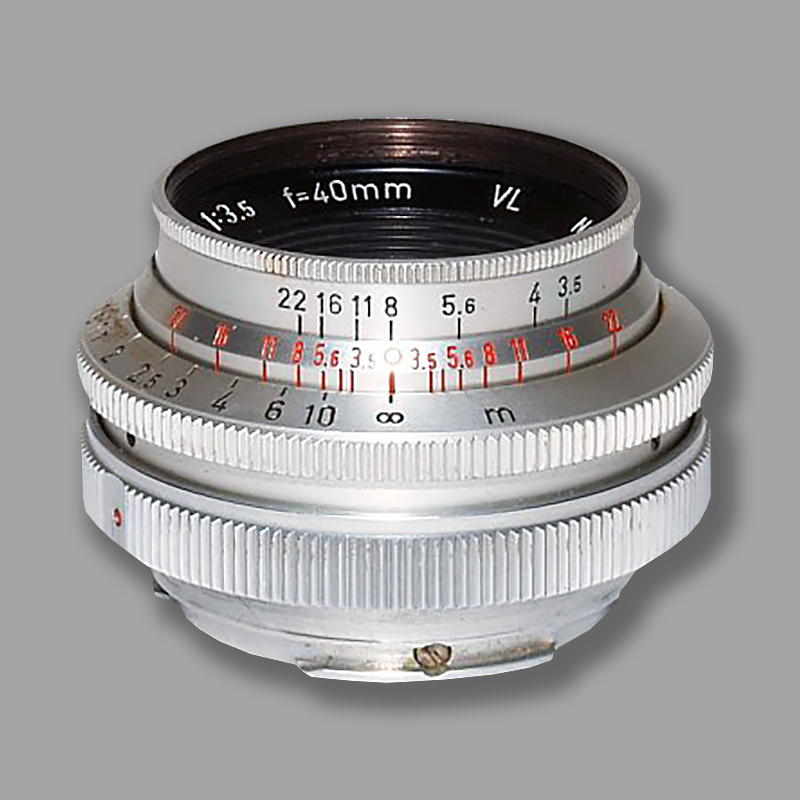
Steinheil-CASSARON 1:3.5-40 mm
At the beginning of the 1950s, 40mm was the shortest focal length available for SLR cameras. It was only with the Angénieux Retrofocus and the Jena Flektogon that “real” wide-angle lenses with a 35 mm focal length were available for the first time. The Cassaron remained a gap-filler in competition with the 40 Tessar and Meyer Helioplan until 1955; most were exported to the USA. The lens was available with a locking aperture from around 1954 under the name “Cassar”.
Technical data: 3 lenses, normal aperture 3.5-22, image angle 56°, filter thread M34x0.5 (36.5×0.5 with adapter), close focusing range from 0.6m, price 129 DM (1953).
- Origin: Munich, Germany
- Year: 1951
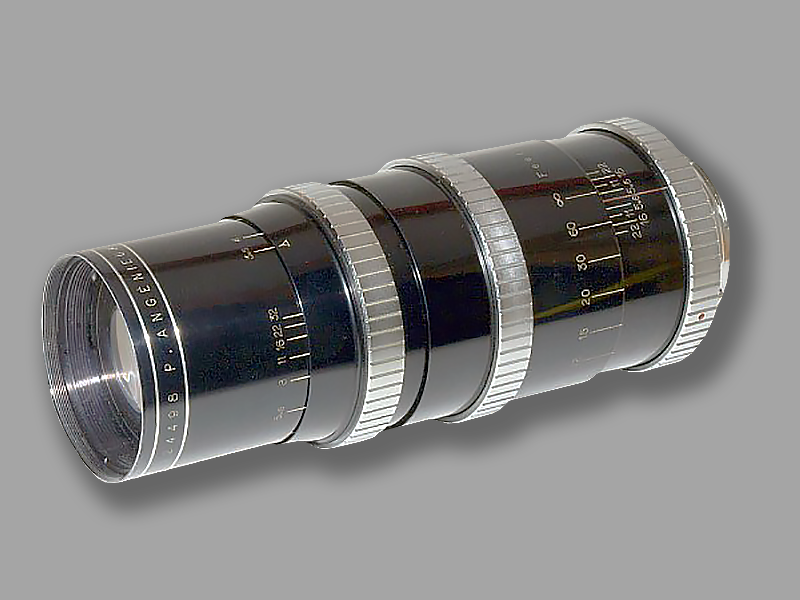
Angénieux Y2 1:3.5-135mm
The Angénieux Y2 was also one of Angénieux’s first SLR lenses. Most of the second version shown here with the wider, matt chrome anodized grip rings were also exported. It can therefore only be found with a distance scale in feet. In the USA this lens cost $89.50 in 1954. German retail price with Exakta connection about 250 DM (1955).
Technical data: High-quality 4-lens construction in normal design with individually arranged lenses, no telephoto (length = focal length), with 18° image angle, pre-selection aperture 3.5-32, filter thread E 43, with double worm gear focusing from 5 ft., Black lacquered brass frame, matt chrome setting rings.
- Origin: Paris, France
- Year: 1950s
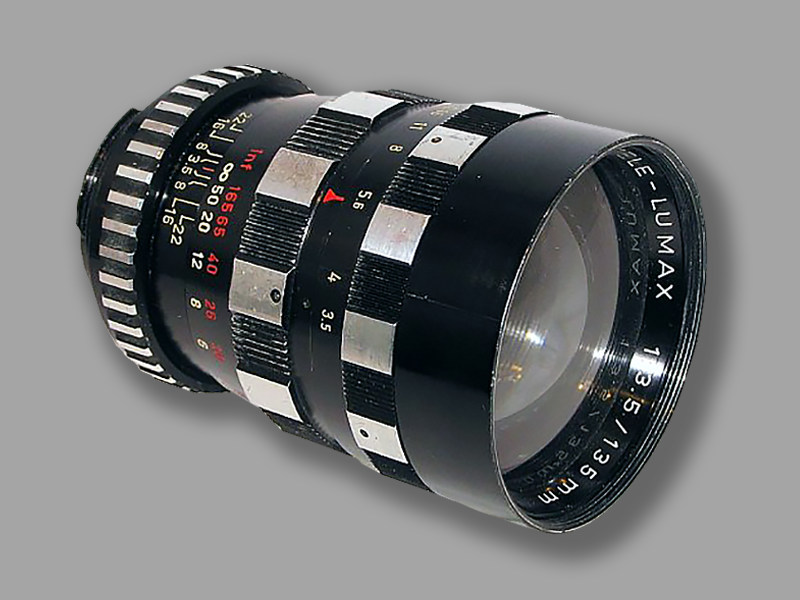
Enna/Corfield Tele-Lumax 3.5-135mm
ENNA also supplied parts of its lens range to other manufacturers, such as Corfield in England or Argus in the USA. They either equipped their own camera models with special connections or offered them – often only with a different ring – as Lumar, Lumax (Corfield) or Sandmar (Argus) with Exakta bayonet or M42 screw connection.
These lenses are optically and mechanically identical to the respective Lithagon or Ennalyt versions. Instead of blank as before, black frames were now in demand again.
Technical data: Locking aperture 3.5-22, image angle 18°, focus from 2.2 m, filter thread ES52.
- Origin: Munich, Germany
- Year: late 1950s
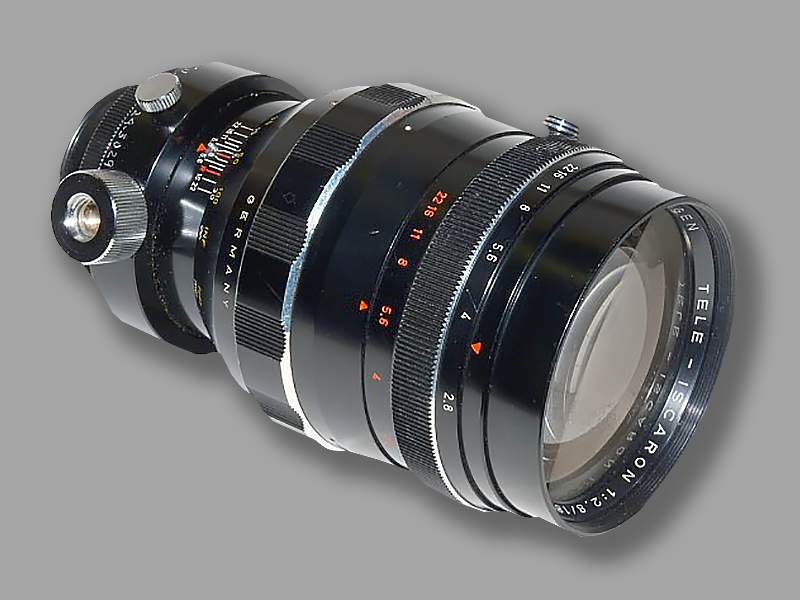
ISCO Tele-Iscaron 1:2.8/180mm BV
In addition to the extreme wide-angle Westrogon, this high-speed Isco Tele-Iscaron 1:2.8/180 mm BV telephoto lens was the top product from Isco Göttingen.
The 1080 g lens had an external bayonet and a rotatable ½” tripod connection on board as a connection to the Exakta. It also has a black lacquered brass mount in a black/chrome ring design.
The data: 5 lenses, aperture preselection 2.8-22, image angle 13.6°, filter thread 69mm, close focusing range from 1.8m. At 600 DM, the most expensive Isco interchangeable lens for 35mm SLRs.
- Origin: Göttingen, Germany
- Year: 1958
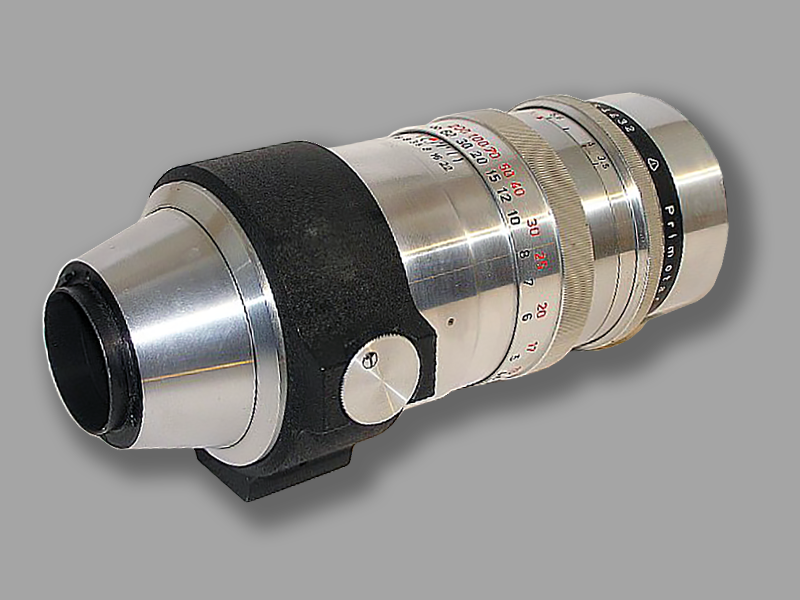
Hugo Meyer Primotar 1:3,5-180
The Primotar 3.5/180 is an impressive lens in every respect and has been awarded the GDR quality rating /1\. Unlike the 4-lens primotars with shorter focal lengths, the two front lenses of this lens are cemented together. The lens of normal design (not a teleconstruction) has a comparatively high light intensity, but is also correspondingly heavy.
At 1050 g, it has three times the weight of the Telemegor 5.5/180, which is 1 1/2 stops weaker and has the same focal length (350 g). Like this one, it also has aperture preselection, the shortest setting distance is 2.2 m, filter thread M67. Like the long Telemegore, this Primotar also has an external bayonet connection.
- Origin: Görlitz, Germany
- Year: 1950s
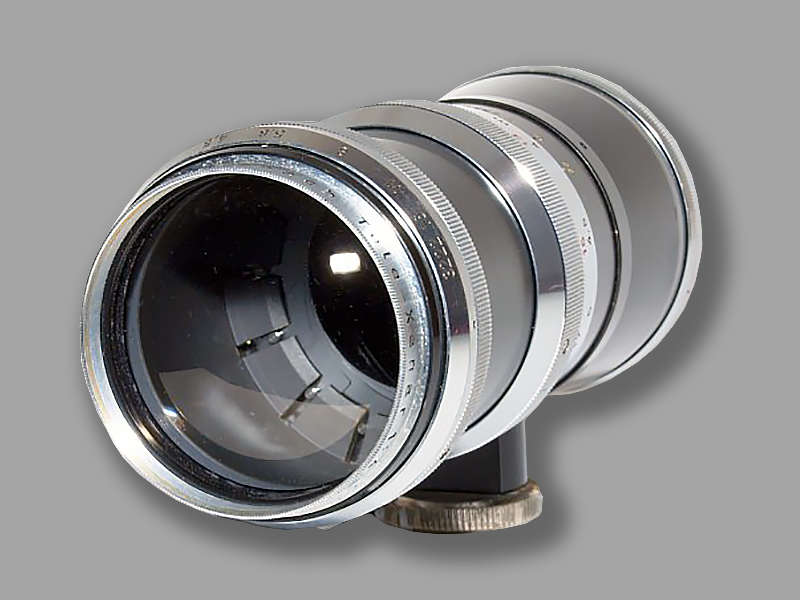
Schneider Tele-Xenar 1:4.5-240 mm
The Schneider Tele-Xenar 1:4.5-240 mm is a relatively small and bright but very heavy lens for this focal length. A tripod connection is permanently attached.
Visually and mechanically, this construction dates back to the pre-war period. Some of the long focal length Tele-Xenars had a short type information engraved on the focus ring.
Data: 4 lenses, normal aperture 4.5-32, image angle 10°, filter E55, weight 1188g, close-up range from 4 m. Brass frame, camera connection and adjustment rings chrome-plated, frame body painted black. Price 407 DM (according to Schneider price list 1951).
- Origin: Kreuznach, Germany
- Year: 1950-1954
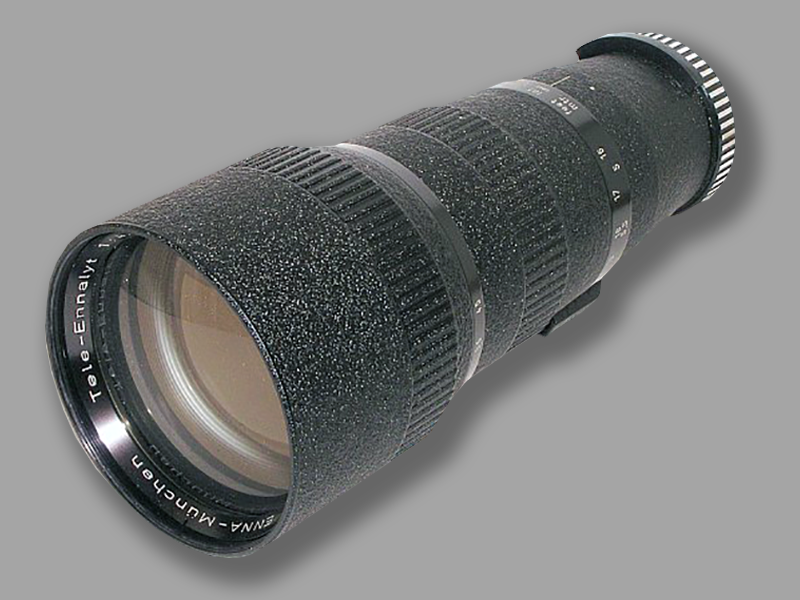
ENNA Tele-Ennalyt 4.5/400mm (5,6/600mm)
In the same design as the Tele-Ennalyt 4.5/400 mm. – of course longer and heavier – this lens version was also available as a Tele-Ennalyt 1:5.6/600 mm with 600 mm focal length. Both the Tele-Ennalyt 4.5/400 mm and the Tele-Ennalyt 5.6/600 were offered with different camera connections for 35mm SLRs (Edixa, Praktica, Asahi Pentax, Pentacon/M42; Exakta, Alpa, Miranda, Nikon F, Praktina, Yashica). Both lenses could also be used with 6×6 SLR.
Data of the Tele-Ennalyt 4.5-400 mm: locking aperture 4.5-32, angle of view 6°, focus from 5 m, filter thread ES95. The price was – uniformly for these connections – 456 DM (400 series) and 798 DM (600 series), including the sun visor.
- Origin: Munich, Germany
- Year: 1958
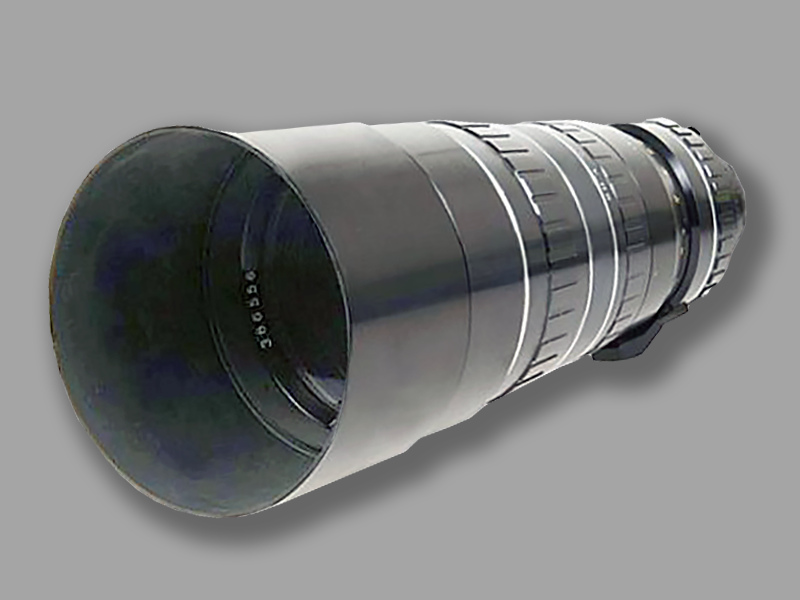
ISCO Tele-Westanar 1:4.5-400mm
Because you’re already there – you might have thought at Isco in 1961 – we’ll just add a long bag to the range… The Westanar, which has already been redesigned as a 135 and 180 telephoto version, has now also been released as a 400mm long-distance lens.
The ISCO Tele-Westanar 1:4.5-400mm was born. The stop aperture does not pose any particular practical problem at this focal length.
The technical data: 5 lenses, locking aperture 4-22, image angle 6.2°, close focusing range from 4 m, black painted brass mount with black adjustment rings, clockwise distance adjustment. Price 498 DM (1964).
- Origin: Göttingen, Germany
- Year: 1961
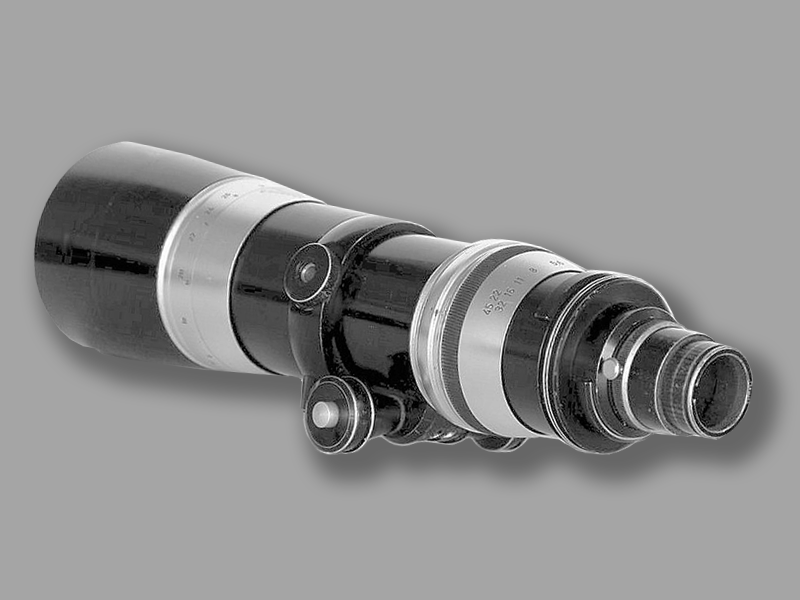
Sport-Dern-Kilar 4/400 and 5.6/600
With the same focusing device as the Pan Tele-Kilar 4/300, the two sports long-distance Kilar were also offered in 1960. The rotary knobs on both sides cover an adjustment range from infinity to 2.8m. Optically, however, these are typical long-distance lenses with 2 lenses, but with a comparatively high light intensity and usually only for the 35mm format. The connection was initially “N” and was changed to “We” around 1965. This must be taken into account when using connecting pieces!
After the takeover, ZOOMAR continued the lenses with a WE mount with minor changes until 1971, but as the Sport-Fern-Kilar 4/400 (SPOVI) and Sport-Fern-Kilar 5.6/600 (SPOSO).
- Origin: Munich, Germany
- Year: 1960
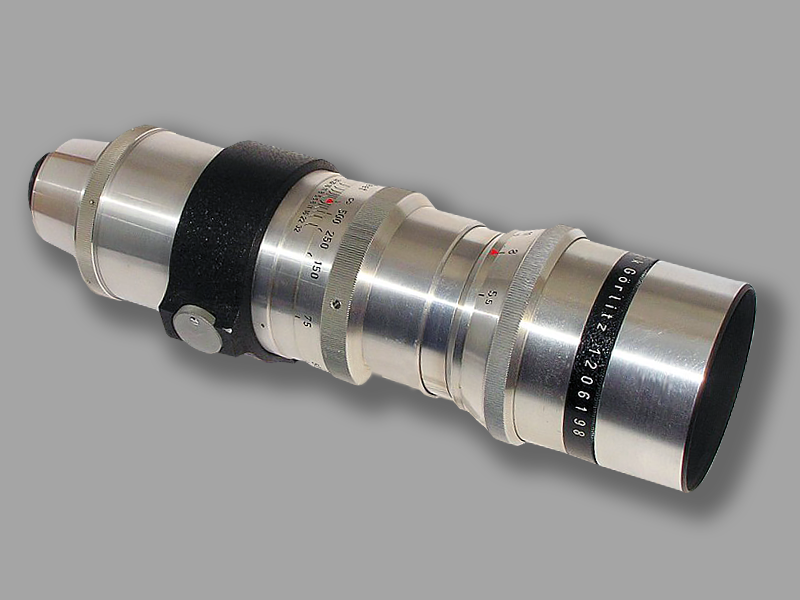
Hugo Meyer Telemegor 1:5.5/400
Many Meyer long-range lenses from the 1950s were exported to the USA; the first examples were given a distance scale in “feet”. From around 1954, Meyer introduced the double engraving of the distance scale in m and feet. At around the same time, the long focal lengths were equipped with an external bayonet.
Around 1956 a new design with higher light intensity appeared, the Telemegor 1:4.5/300. The grooved adjustment rings of the 300 correspond to those of the Telemegor 400. The Telemegor 400 was only available to a limited extent in Germany in the mid-1950s because exports to the USA were the first to be served. The selling price was DM 500 in 1955.
- Origin: Görlitz, Germany
- Year: 1958
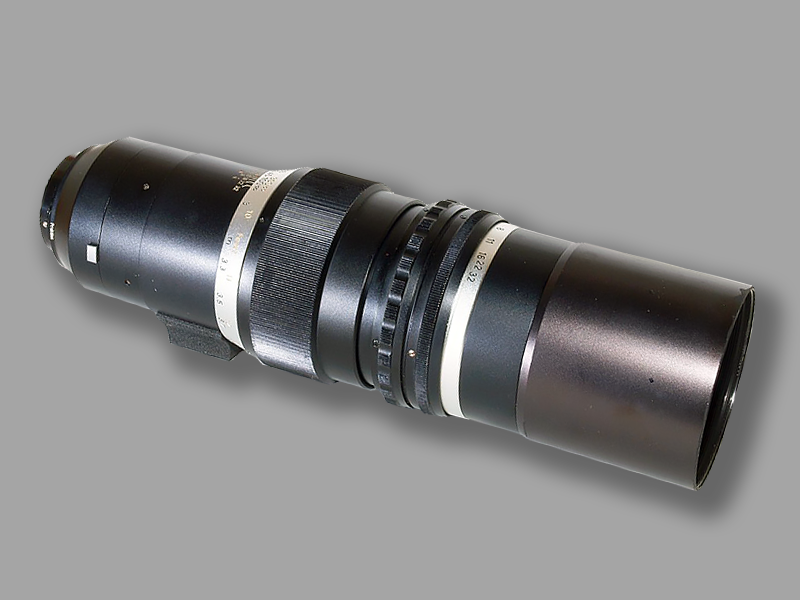
Steinheil Tele-Quinar 1:4.5-300 mm
Also in 1956, a very fast “real” telephoto lens for this focal length appeared in a shortened design with 5 lenses: the Steinheil Tele-Quinar 1:4.5-300 mm. According to the Steinheil brochure, the “crown in the Steinheil range of high-quality lens creations”. The lens is divisible; the removable camera connector was available for various camera systems. The Tele-Quinar 4.5/300 with sun visor and adapter is 30 cm long, despite the shortened telephoto design.
The data: 5 lenses, aperture preselection with detents 4.5-32, angle of view 8°, filter thread 67mm, close focusing range from 3m
Price 795 DM including sun visor and 1 connection piece (Steinheil price list 1958).
- Origin: Munich, Germany
- Year: 1956
Each of the groups of special lenses mentioned below will first be briefly introduced and then one random example of a lens from that particular group will be discussed.
(Macro 35mm – 200mm)
Macro lenses are designed from the outset for short object distances. The highest imaging performance is achieved at close range. But that doesn’t generally mean that you can’t take normal photos with such a lens. Only very special optics, such as microscope or magnifying lenses, cannot be used for this.
Good macro lenses do not impair their imaging performance even in the long range, but do not always produce the desired image result. In addition, macro lenses with their longer worm gear are mechanically more complex and therefore comparatively heavier.
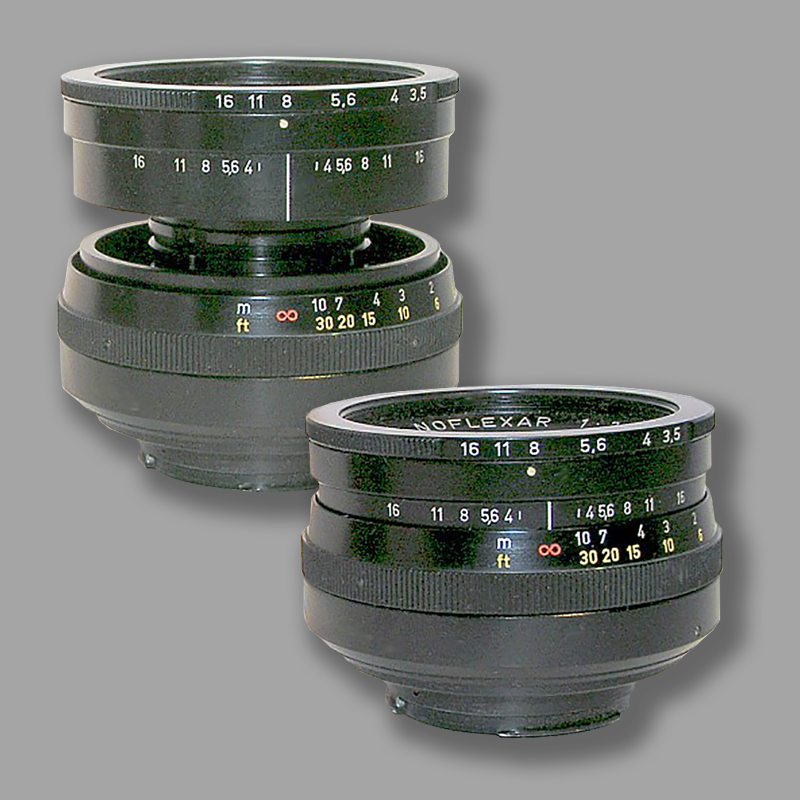
Noflexar 1:3.5/35mm macro lens
Novoflex, better known for high-quality bellows devices and pistol lenses, temporarily added a 35 mm macro lens to its range.
The 4-lens Noflexar 1:3.5/35 mm with aperture selection is one of the best macro lenses that money could buy.
A special feature is the 4 locking levels, with which it can be extended to the shortest distance as a normal wide-angle lens after the adjustment limit of 40 cm has been reached. Practical – this requires 1/4 stop of additional exposure.
Further data are: adjustable up to 7 cm (image scale 1:2), filter thread M49x0.75
- Origin: Memmingen, Germany
- Year: 1960s
(soft focus)
A soft focus lens deliberately uses spherical aberration in order to blur the image. Soft focus shots are not the same thing as out-of-focus shots and cannot be achieved merely by defocusing your lens. This effect is more about the diffusion of light.
In the past, soft focus photography was used for capturing glamour shots or portraits, as the effect allows for blending of tones and leans toward a softer look to eliminate any fine details on the skin or face. As early as 1915 in Hollywood films, it was used for adding a dreamy glow, mostly to actresses for the same reason.
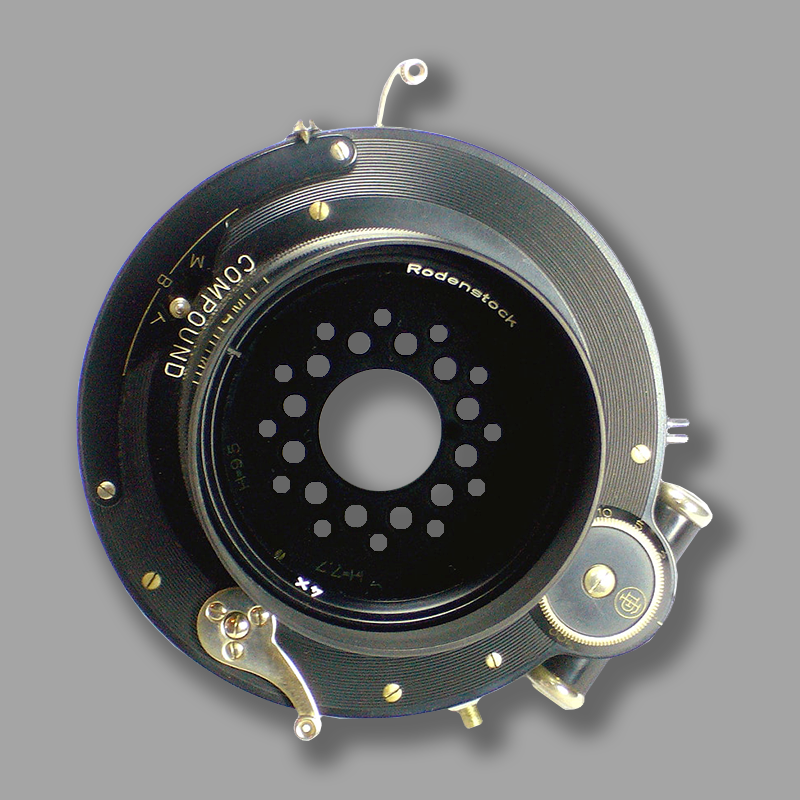
Rodenstock Imagon 120mm f/4.5
The Rodenstock Imagon is a professional soft focus and depth imager lens that was offered by Rodenstock from 1931 to the 1990s in various focal lengths for 35mm, medium and large format cameras.
The example shown is mounted in a compound central shutter (M, B, T) and has three interchangeable shutters whose hole diameter can be adjusted, then a filter for light reduction (“4x”) and finally a lens hood that can be clipped on at the very front.
Focal length of the lenses: 200 millimeters. The screen apertures control the desired blurring effect.
- Origin: Munich, Germany
- Year: 1931 – 1990s
(Small Zoom <135mm)
Zoom lenses have long been known in the film industry as “rubber lenses” but only lately found their way to the 35mm format. The first lens of this kind was the Voigtländer Zoomar 1:2.8/36-82 mm. The high light intensity, even by today’s standards, was achieved with a massive design and a somewhat dull image. Its development is often attributed to Heinz Kilfitt, who also made the well-known Kilare.
In any case, this Zoomar was the first standard zoom for a 35mm SLR in 1959, the Bessamatic with the Compur interchangeable bayonet, and later also with other connections – including for the Exakta.
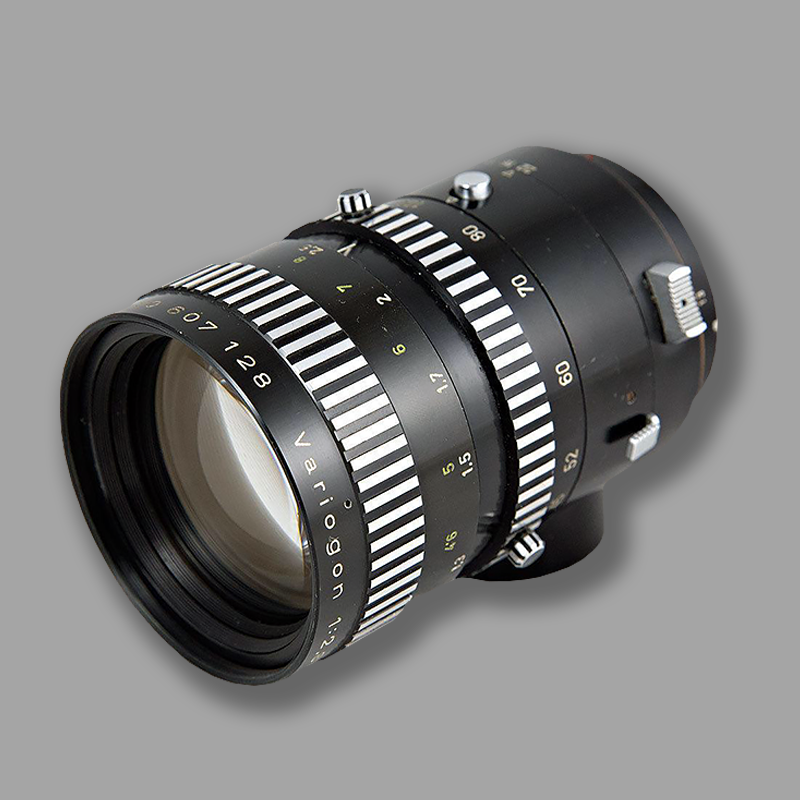
Schneider Variogon 1:2.8 – 45-100 mm (“rubber lens”)
After Voigtländer offered a “normal” zoom in 1959 and ENNA also offered the first telephoto zoom, Schneider followed in 1965 with two zoom lenses. The two Schneider Vario lenses were delivered with a connection that can be adapted to various camera systems.
Data: 14 lenses, pre-selection aperture with detent 4-22 / automatic aperture when using the handle and special cable release, image angle 48.6-25.4°, filter M67, weight 720g, close focusing range from 1.2 m.
The price was 1,023 DM (according to Schneider price list 1968, extra interchangeable base 22 DM).
- Origin: Kreuznach, Germany
- Year: 1965
(Large zoom >135mm)
At the end of 1959, Enna Munich constructed the first telephoto zoom 1:4/85-250 mm, a lens monster that weighed 1.2 kg and was sinfully expensive for the time. After that, more “rubber lenses” followed one after the other, many coming from the Far East.
European photographers initially viewed this with skepticism. But little by little, their variogon optical performance became better and better and it became clear that zoom lenses also serve convenience. Equipping with two zoom lenses also covered the commonly used focal length range between around 35 to 200 mm with good quality.
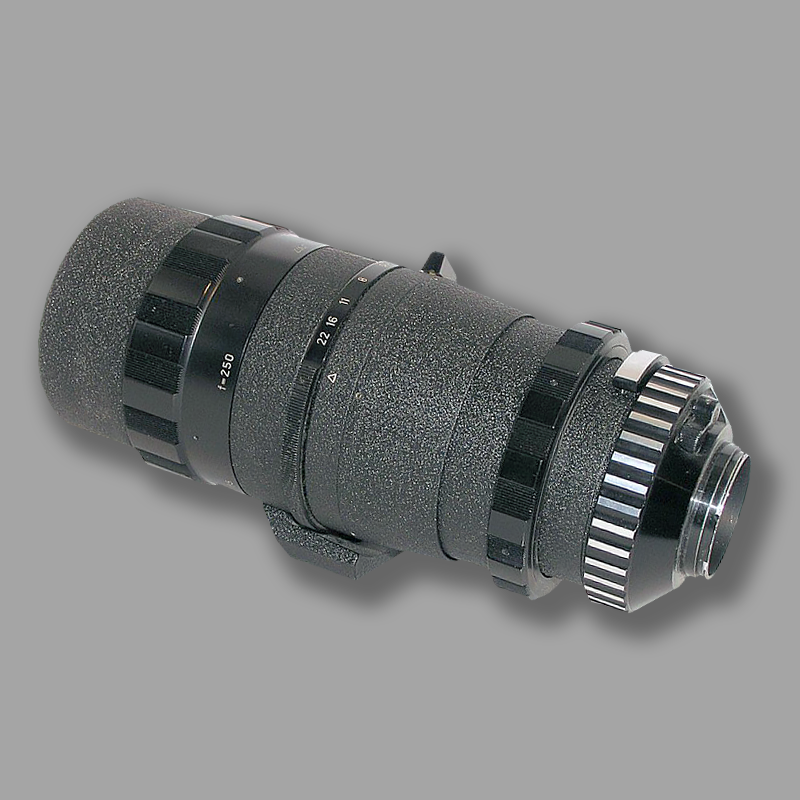
ENNA Tele-Zoom 1:4 – 85-250 mm
This monster lens, then called the “rubber lens,” was the first telephoto zoom designed in Germany and brought onto the market worldwide. The lens has 12 lenses and pre-selection aperture 4 – 22, image angle is 10 to 29° depending on the focal length, focus is 0.6 to 3.3 m.
The front filter thread is ES74. However, using a filter in front of the lenses is not recommended with this lens , because filters affect the optical calculation data and can cause impairment of the imaging performance.
Although the frame of the telephoto zoom has a thread for M74 screw-in filters, the lens also has a filter drawer for special filter cassettes.
- Origin: Munich, Germany
- Year: 1959
(Fisheye 4mm – 14mm )
A fisheye lens is basically an ultra-wide-angle lens, offering an enormous field of view. These are more specialist lenses and aren’t generally needed by most photographers. They are useful if you are photographing indoors or using your camera for design work. An ultra-wide-angle lens can have a focal length as low as 8mm.
In conclusion, there are different types of camera lens for almost any situation you could find yourself in as a photographer. Knowing which lens is best for what scenario, will set you on your way to becoming a much-improved photographer.
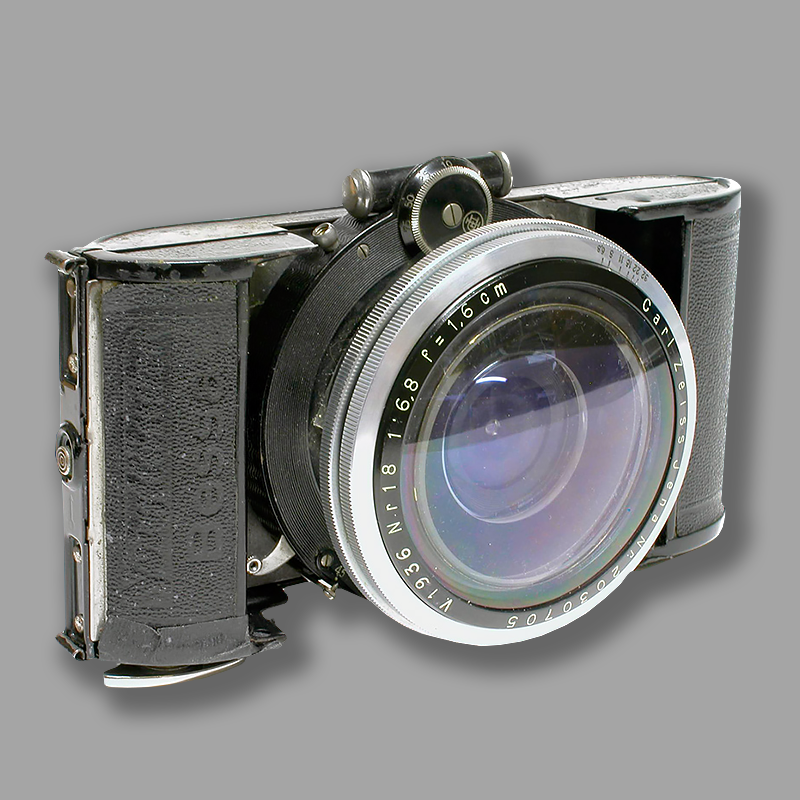
Carl Zeiss Jena Sphaerogon V1936 Nr. 18 1.9cm f6.8
The name Sphaerogon was used on a variety of extreme wide angle lenses created by Zeiss during and after the war, but V1936 Nr. 18 was the widest and the fastest with a claimed 210 degrees of coverage. This lens uses 8 elements in 4 groups and was the most complex of all Spaerogon prototypes. Up front is an extremely large air spaced element with another doublet behind it. On the back of the lens is a complex arrangement of 5 elements in 2 groups, which allow achieving it’s faster f/6.8 max. aperture.
A one off lens, the Zeiss Sphaerogon was permanently mounted to a dial set Compur leaf shutter and installed into a Voigtländer Bessa 6×6 camera.
- Origin: Jena, Germany
- Year: 1949
